- Navigating with Ease: The Comprehensive Guide to Bow Thrusters

What is a Bow Thruster?
Bow thrusters have become increasingly popular among boat owners, but what exactly are they? In layman's terms, a bow thruster is a propulsion device installed in the bow, or front, of a boat to aid in maneuvering. The device uses a motor to power a propeller, pushing water perpendicularly to the boat's heading and providing a lateral, or sideways, motion. Think of it as power steering but for your boat, allowing you to move sideways without changing the direction your boat is facing.
Why Should You Care?
Do you find docking stressful? Are you anxious about navigating through tight marinas? Bow thrusters can relieve this stress by offering precise control over your boat's movement. Whether you are a seasoned sailor or new to boating, a bow thruster can significantly enhance your maneuvering capabilities, making your boating experience more enjoyable and less stressful.
Historical Background
While bow thrusters may seem like a modern convenience, the idea isn't new. Early versions of lateral propulsion devices date back to the early 20th century, although they were primarily used on larger commercial vessels. It wasn't until advancements in technology made these devices more compact and affordable that they became popular among recreational boaters.
Types of Bow Thrusters
Hydraulic bow thrusters.
Hydraulic bow thrusters operate using a system of hydraulic pumps and motors, typically running off the boat's main engine. These thrusters are often more powerful and can be more efficient, especially for larger vessels. One key advantage is their ability to run for longer periods without overheating, making them ideal for boats that require extensive maneuvering.
Electric Bow Thrusters
Electric bow thrusters are the go-to for smaller boats. These thrusters run off your boat's electrical system and are generally easier to install. They are also less expensive upfront but may not have the same power output or efficiency as hydraulic systems.
Sidepower Bow Thruster: A Special Mention
When it comes to trusted brands, Sidepower stands out. Known for their high-quality, efficient, and reliable bow thrusters, Sidepower has become a household name for many boaters. If you're looking for a bow thruster that combines both performance and durability, Sidepower is worth the investment.
Tunnel vs. Retractable Thrusters
Tunnel thrusters are the most common type and involve a tunnel-like tube fitted through the hull, housing the propeller. Retractable thrusters, on the other hand, can be retracted into the hull when not in use, reducing drag.
Bow Thruster Kits
What's in the kit.
When purchasing a bow thruster, you often have the option to buy it as a complete kit. These kits generally include the thruster unit, tunnel, propellers, and control panels—basically, everything you need for a successful installation. The convenience of having all these components together can't be overstated. It's like getting an all-in-one care package for your bow thruster needs.
Do You Need One?
The real question is, do you need a complete kit? If you're new to bow thrusters or are unsure of the individual components needed, then a kit can be invaluable. Not only does it take out the guesswork, but it often comes with a set of installation instructions that can make your life significantly easier.
Buying Separate Components
If you're an experienced boater or have specific needs that can't be met by a standard kit, purchasing individual components might be the way to go. This allows you to customize your setup for optimal performance, though it does require a good understanding of how the different components work together.
Importance of Side Power in Bow Thrusters
Maneuverability.
The term "side power" refers to the lateral thrust produced by the bow thruster. The higher the side power, the better your boat will respond to steering inputs. This is crucial when you're navigating through tight spaces or docking in difficult conditions.
High side power also contributes to safety. If you're caught in choppy waters, a strong bow thruster can help you maintain control and avoid obstacles, minimizing the risk of collision or grounding.
The Installation Process
Professional installation.
Given the complexity of installing a bow thruster, many boat owners opt for professional installation. This involves hull modification, electrical or hydraulic work, and fine-tuning, tasks best left to the experts unless you have significant experience.
DIY Installation
If you're a seasoned DIYer with a strong understanding of boat mechanics, installing a bow thruster yourself can be rewarding—though challenging. You'll need specialized tools and materials, not to mention a fair amount of time.
Tips and Tricks
Regardless of whether you go the DIY route or opt for professional installation, some tips can make the process smoother. One such tip is to dry-dock your boat for easier access to the hull. Also, make sure to consult the manual thoroughly before starting.
Bow Thrusters for Sale: What to Look For
Brand reputation can tell you a lot about the quality of a bow thruster. Established brands like Sidepower are generally a safe bet, offering a combination of reliability, efficiency, and customer service.
Bow thrusters can be a significant investment, with prices ranging from a few hundred to several thousand dollars. While it's tempting to go for cheaper options, remember that this is a long-term investment. Quality should be a leading consideration.
Power and Efficiency
Before buying, assess your boat's size and the level of maneuverability you desire. This will help you choose a bow thruster with the appropriate power and efficiency.
Reviews and Ratings
Online reviews and ratings can provide valuable insights into the performance and reliability of a bow thruster. Take the time to read through customer feedback before making a decision.
Read our top notch articles on topics such as sailing, sailing tips and destinations in our Magazine .
Check out our latest sailing content:
Sailing the Maldives: paradise
Sail from Lefkada for 14 days. Where to?
What not to miss when visiting Lefkada
Where and why to sail from Lefkas marina
Don’t panic: handling maritime emergencies
The best sailing routes from Biograd na Moru
Yachting Away from Ourselves: A Voyage to Inner Peace
Sail to the 7 most beautiful sights in Greece
What skipper's licence do I need?
From Lefkada or Corfu to Paxos and Antipaxos
Discover the paradise of Paxos and Antipaxoss
Discover Corfu: sailing adventure in the Ionian
Sextant and navigation: survival without GPS
5 best sailing routes in the Bahamas
Yachting guide to the Bahamas
The ultimate yacht cleaning kit
Introduction to chartering with a skipper
Traditional sailor tattoos: Meaning of the swallow
The most popular catamarans of 2023
Fishing and sailing: where to sail for the best catches?
Lighthouses you won't forget
New Year's resolution: let's sail more eco
British Virgin Islands: sailing paradise
How to get kids to enjoy sailing?
How to sail a yacht on a tailwind
How to sail a yacht in crosswinds
Götheborg: the greatest sailing ship
How to have a nautical Christmas
What to pack for a tropical sailing
How to sail a yacht against the wind
Installing Bow Thrusters
Step-by-step guide.
If you've opted for DIY installation, you'll want a thorough step-by-step guide to navigate you through the process. This usually comes with the bow thruster kit or can be downloaded from the manufacturer's website. Remember, missing even one small step could result in poor performance or, worse, damage to your boat.
Time and Effort
Installing a bow thruster isn't a quick job. Depending on your skill level and the complexity of your boat, it could take anywhere from a few hours to a full day or even longer. Plan accordingly and don't rush through the installation.
Precautions
Safety first! Always ensure that your boat is securely dry-docked and that you're following all safety guidelines when working with electrical or hydraulic systems. A little caution can save a lot of trouble later.
Boat Thrusters
H3: how they differ from bow thrusters.
Boat thrusters and bow thrusters are not exactly the same. While bow thrusters are specifically located at the bow, boat thrusters can be placed elsewhere, including the stern. The purpose remains the same—to assist with maneuvering—but the placement can affect the boat's handling characteristics.
Stern Thrusters: The Counterpart
Stern thrusters serve a similar function as bow thrusters but are installed at the rear end of the boat. Some boaters prefer having both types for maximum control over their vessel, particularly in challenging navigational situations.
Narrowboat Bow Thrusters
Are they different.
Narrowboats pose a unique set of challenges due to their length and narrow width. Standard bow thrusters may not provide the level of control required for these vessels. Specialized narrowboat bow thrusters are designed to tackle these unique challenges.
Unique Challenges
The unique challenges of navigating a narrowboat—like tight turns and limited space for maneuvering—require a specialized bow thruster. The focus here is more on precision than power.
Fortunately, several brands offer bow thrusters specifically designed for narrowboats. These units typically provide finer control and may come with features like remote operation for ease of use.
Bow Thrusters for Small Boats
Is size a limiting factor.
You might think that smaller boats wouldn't benefit from a bow thruster, but that's not the case. Compact bow thrusters are available for smaller vessels, and they offer many of the same benefits as their larger counterparts.
Compact Models
Several brands offer compact bow thrusters suitable for small boats. These are generally easier to install and less expensive, making them a viable option for casual boaters or those on a budget.
Thrust-to-Weight Ratio
When choosing a bow thruster for a small boat, it's crucial to consider the thrust-to-weight ratio. A thruster that's too powerful could be overkill and a waste of resources, while an underpowered one might not provide the maneuverability you need.
Thrusters in Ships
Scale and complexity.
Ships, being much larger than typical recreational boats, require thrusters that can produce a tremendous amount of power. These are often complex systems that involve state-of-the-art technology to ensure maximum efficiency and safety.
Types of Ship Thrusters
Ships generally utilize specialized types of thrusters, like azimuth thrusters and tunnel thrusters, to provide both maneuverability and stability. These are far more advanced and are custom-engineered to fit the specific needs of each ship.
Safety Measures
Given the scale and potential risks, the installation and operation of thrusters in ships are governed by stringent regulations. Adherence to these guidelines is critical to ensure the safety of both the vessel and its occupants.
Boat Thrusters Market
Emerging trends.
The boat thruster market is continuously evolving, with new technologies and designs making their way into the mainstream. Features like wireless control and automated navigation systems are gaining popularity, offering boaters unprecedented levels of control and convenience.
Where to Buy
From marine supply stores to specialized online retailers, there are numerous avenues to explore when shopping for a bow thruster. Many boaters also opt to buy directly from manufacturers to ensure they're getting the latest models.
Used Bow Thrusters
Buying a used bow thruster can be a cost-effective alternative, but it comes with its own set of risks. Always ensure that you're buying from a reputable source and that the thruster has been thoroughly inspected and tested.
Whether you're a casual boater looking for a bit more control over your vessel or a professional mariner in search of advanced systems, bow thrusters offer solutions for a variety of needs. From small boats to massive ships, these invaluable devices make navigation easier, safer, and more efficient. With numerous options available in the market—from compact models to specialized kits—there's likely a bow thruster that's perfect for you.
So what are you waiting for? Take a look at our range of charter boats and head to some of our favourite sailing destinations.
FAQs: Everything about Bow Thrusters
Can i install a bow thruster myself, are there bow thrusters for small boats, what is side power in a bow thruster, do i need a bow thruster for my narrowboat, what are the leading brands for bow thrusters, i am ready to help you with booking a boat for your dream vacation. contact me..

Denisa Nguyenová
Toll-Free: 888-898-8608
The History of ez Drive™ »
- Dealer Login
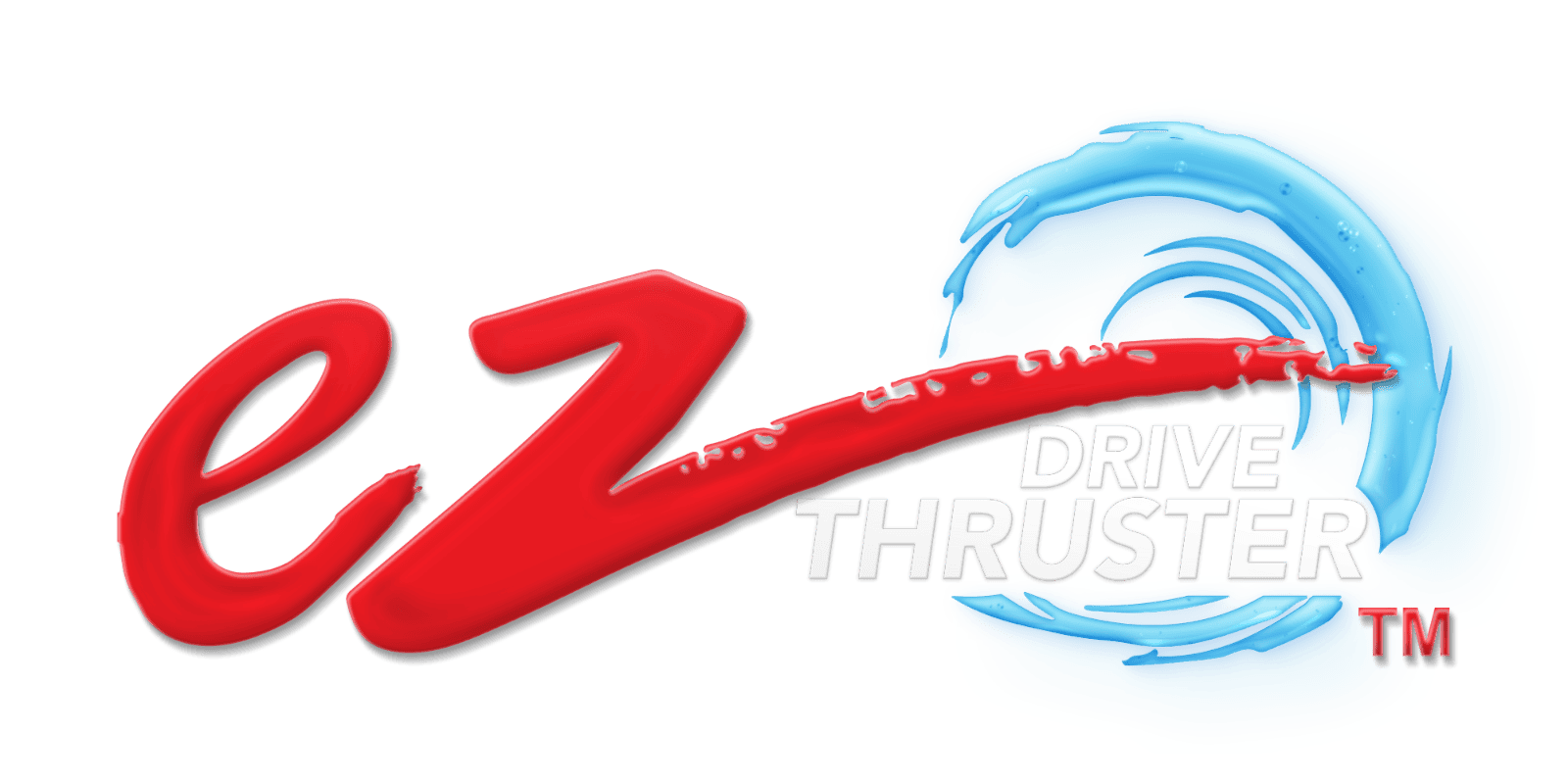
- ezDrive™ History
- Boat Brands Installed
- WWA Partnership
- Hiring Now – Join the Team!
- Demonstration Videos
- Customer/Dealer Videos
- Customer Testimonials
- Brand Installation Photos
- NEW! Streamline H Thrusters
Horizontal Thrusters
Vertical thrusters.
- Accessories
- Quote Request
- ezDrive™ Specs
- ezDrive™ Model/Brand Matrix
- ezDrive™ Installation
- ezDrive™ FAQs
- Contact Form
- Warranty Registration
- Yacht Thruster
- Dealer Area
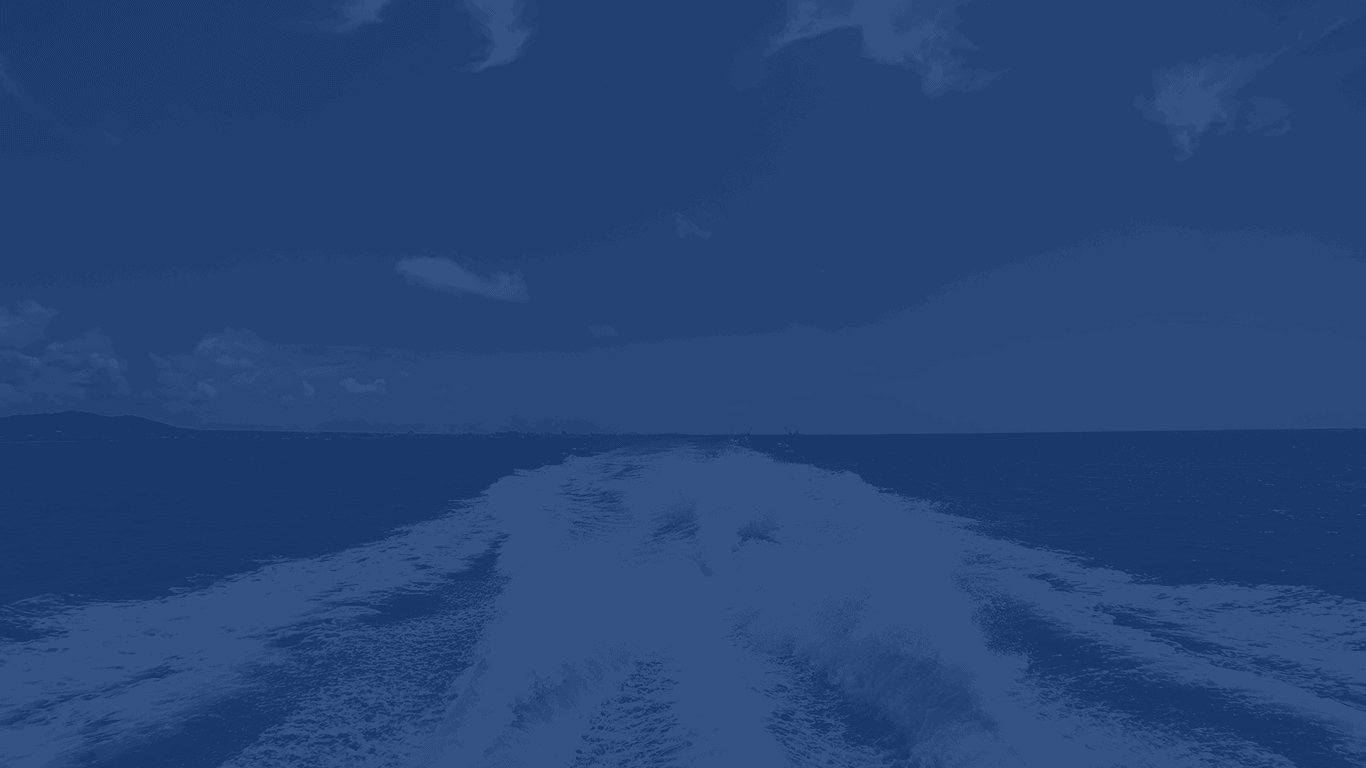

Wakeboard Boat Installations
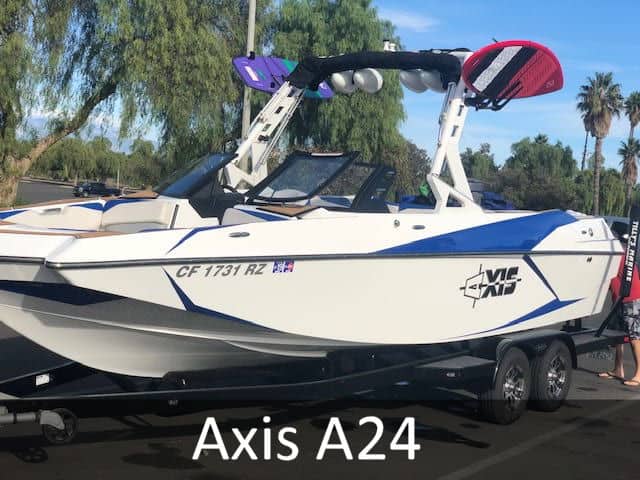
Ez Drive Thrusters for Wakeboard & Ski Boats!
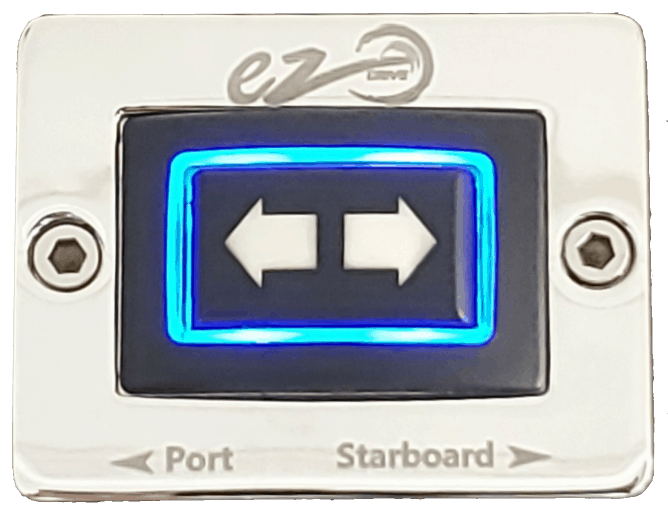
Designed Specifically for Active Wake Surfing, Wakeboard, Watersports and other small boat enthusiasts!
Now Offered as Optional (OEM) Equipment on 7+ Major Boat Brands and Counting!
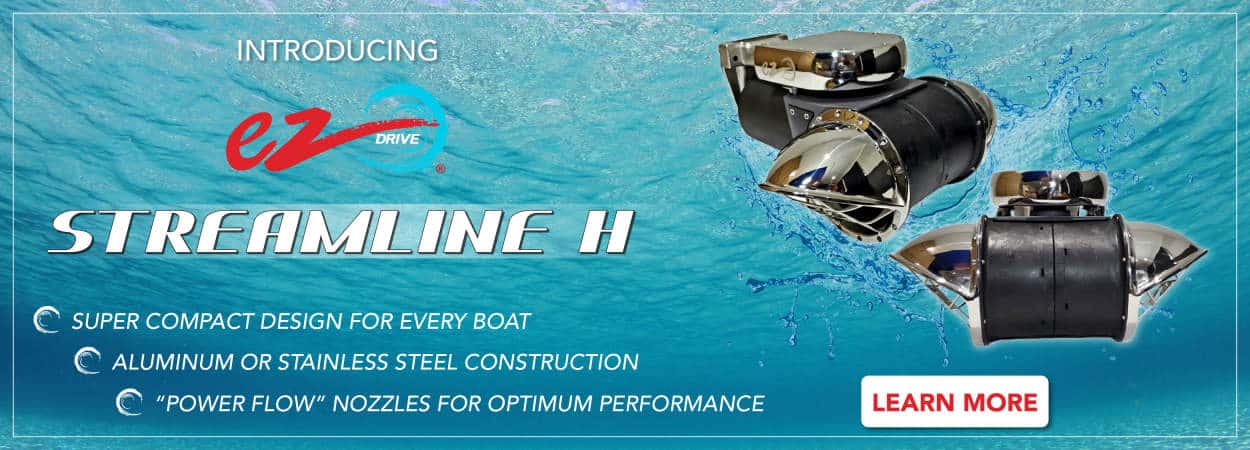
Our specifically designed equipment packages are available for every brand of boat and include full installation instructions and technical support.
Packages include all parts required for normal installation except battery cables which are optional., ezdrive™ thruster mockups.
We now have full-size ezDrive Thruster™ mockups that can be used to find the best position to mount the ezDrive™ thruster on your boat.
Once you find the ideal position, you can simply tape the mockup in place and remove the front portion of it. The remaining ‘drilling template’ will then be in the perfect position!
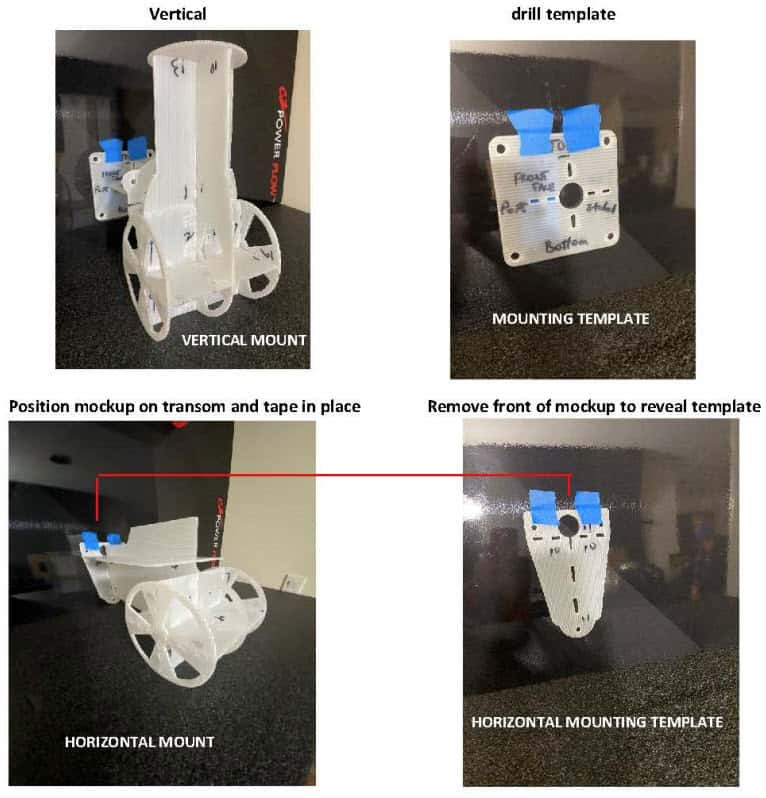
Download PDF with more details on the ezDrive Mockups »
NO ADDITIONAL BATTERY REQUIRED.
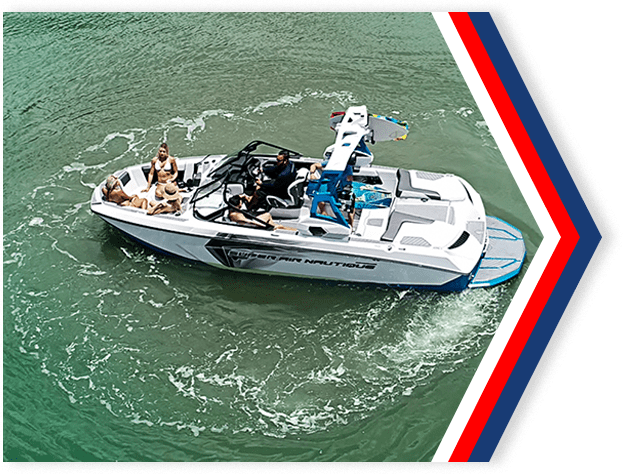
When it comes to external thrusters,
We pioneered the concept and we continue everyday as the leader, bringing innovation to the market.
With your choice of control system
ez Drive™ Military Grade Joystick IP69K
Advanced ezdrive™ technology: waterproof, dust-tight, even from close-range high-pressure and high-temperature spray downs. joystick is rated ip69k, hi-tech illuminated rocker switch, intuitive "rocker switch" design allows for precision control of your ezdrive™ thruster by simply rocking the switch back and forth (port to starboard) with your fingertips., side mount throttle control with thruster, uniquely designed specifically to retrofit your boat on a pug-n-play basis with throttle and thruster control. absolute and complete control at your fingertips..
Tow Boat Owners Love The ez Drive™ Thruster
Upgrade your tow boat wake surfing experience today, easy to install.
The ultimate thruster for wakeboard boat power. Fits all brands of wakeboard boats.
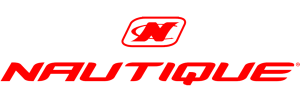
Plus More »
***The Trademarks above belong to the respective manufacturers. EZDrive ™ makes no claim to any ownership of such marks.
Speak to Our ezDrive™ Experts Now
Contact our marine technology professionals today and get started on this exhilarating wakeboarding experience, tel: 305.667.5811, text : derek 305.244.5233 yolanda 305.922.5964.

The Essential Guide to Bow Thruster Construction and Functionality
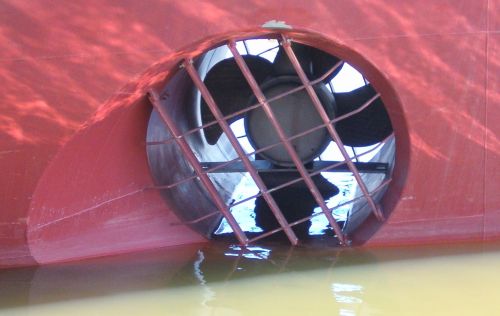
Bow thrusters are a type of propeller-shaped system fitted on the bow (forward part) and stern (known as stern thruster) of the ship. They are smaller in size than the ship’s propeller and help the vessel be more manoeuvrable at lower speeds.
Bow thrusters are generally used to manoeuvre the ship near coastal waters and channels or when entering or leaving a port during bad currents or adverse winds.
Bow thrusters help tugboats berth the ship to avoid unnecessary time and, eventually, money wastage because the vessel stayed less in the ports. The presence of bow thrusters on a vessel eradicates the need for two tugs while leaving and entering the port, thus saving more money.
Nowadays, ships have both bow and stern thrusters, which makes them independent of tugboats for manoeuvring in the port limits (if the port regulation does not make it compulsory to use tugboats).
Related Read: A Detailed Explanation of How a Ship is Manoeuvered to a Port
Table of Contents
Installation Of Bow Thruster
Generally, side thrusters are transverse thrusters placed in a duct at the ship’s forward and aft end. The thruster set at the forward end is known as the bow thruster, and the one placed at the aft end is known as the stern thruster.
The requirement for the number of thrusters to be installed depends on the ship’s length and cargo capacity. The vessel’s route also plays an important factor as many countries have local regulations that stipulate the compulsory use of tugboats to enter or leave their port limits.

For the installation of the side thrusters, the following things are essential:
- The thruster compartment, also known as the bow thruster room, should be easily accessible from the open deck by the ship’s crew
- Most seagoing vessels use an electric motor for the thruster, which is heat-generating machinery and must, therefore, be positioned in a dry and well-ventilated area.
- The bow thruster room should have a high-level bilge alarm , and the indication should be provided in the engine control room and bridge.
- The thruster room should be well-lit
- The room should have at least one light from the emergency source.
- In the case of installation of more than one panel, make sure to operate the thruster from only one panel at a time.
- The thruster room should not be used to store flammable products in the area of the electric motor.
- The tunnel or conduit containing the propeller must be installed perpendicular to the ship’s axis in all directions.
- The propeller should not protrude out of the conduit
- Grid bars may or may not be fitted at both ends of the tunnel (taking into account how much debris the ship bottom will experience in its voyage). The number of bars for to be kept at a minimum as they tend to reduce the thrust force and overall performance of the bow thruster (or stern thruster)
- Sharp edges on the grid bars are to be avoided. A trapezoidal shape with no sharpness is a good choice of design for grid bars installed perpendicularly to the direction of the bow wave
- The design and position of the thruster tunnel should not interfere with the water flow under the hull or should not add to hull resistance
- Ensure that the material used for the installed thruster does not foul existing equipment inside the ship, such as steering links.
Related Read: Understanding Design Of Ship Propeller
Construction and Working of Bow Thrusters
The bow and stern thrusters are placed in the through-and-through tunnels on both sides of the ship. There are two such tunnels at the forward and aft ends of the ship.
The thruster takes suction from one side and throws it out at the other side of the vessel, thus moving the ship in the opposite direction. This can be operated in both directions, i.e. port to starboard and starboard to port.
The bow thrusters are placed below the ship’s waterline. For this reason, the bow thruster room should be checked for water accumulation at regular intervals.

The bow and stern thrusters can be electrically, hydraulically, or diesel-driven. However, the most commonly used are electric-driven thrusters, as in hydraulic-driven thrusters, there are many leakage problems.
Also, diesel-driven bow thrusters require more maintenance, and someone needs to go to the thruster room every time before starting to check the thrusters.
The thrusters used are usually of the CPP type, i.e., the blades on the propeller boss can be moved to change the direction of the thrust.
The boss, which carries the blades, is internally provided with a movable shaft (operated by hydraulic oil), also known as a Hydraulic Pod Motor-driven Thruster.
Once the signal to change the pitch is given, hydraulic oil will be supplied to operate the internal shaft (within the boss) to change the blade angle of the thruster (as shown in the video).
Related Read: 10 Precautions to Take Before Operating Controllable Pitch Propeller (CPP) on Ships

The motor shaft drives the thruster shaft via a pinion gear arrangement. The sealing gasket is provided in the motor casing which holds the water which is in the tunnel.
The Thruster assembly consists of the following components:
- The electric motor with safety relays
- The flexible coupling between the motor and thruster
- Mounting and casing for the electric motor
- The connecting flange and shaft
- Motor casing seal
- The tailpiece with shaft seal
- The propeller shaft
- The zinc anodes
- Grid with bars at both ends of the tunnel

Operation Of Bow Thruster
A bow thruster consists of an electric motor mounted directly over the thruster using a worm gear arrangement. The motor runs at a constant speed, and whenever a change is required in the thrust or direction, the controllable pitch blades are adjusted.
These blades are moved, and the pitch is changed with the help of hydraulic oil, which moves the hub on which the blades are mounted. As the thruster is of controllable pitch type, it can be run continuously, and when no thrust is required, the pitch can be made to zero.
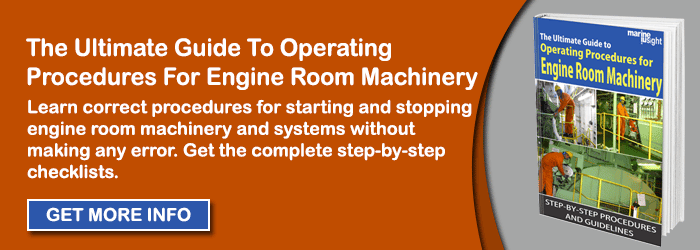
The bridge controls the thruster, and the directions are given remotely. In remote failure, a manual method for changing the pitch is provided in the thruster room and can be operated from there.
Related Read: How Bow Thruster is Used for Maneuvering a Ship?
Usually, the hydraulic valve block, which controls the pitch of the blades, is operated in the BT room to change the blade angle in an emergency.
When the Bow Thruster is operated alone and the signal is given to operate the pitch at the port side, the thrust will turn the ship towards the starboard side from the forward part.

Similarly, when the Bow Thruster is operated alone, and the signal is given to run the pitch at starboard side, the thrust will result in turning the ship towards the port side from the forward part.
When the stern and bow thruster are operated together on the same side, the ship will move laterally towards the opposite side.
As seen in the above diagrams, the bow thruster and the stern thruster provide excellent manoeuvrability to the ship.
Things To Note While Operating Side Thrusters
- Ensure that the motor is started well ahead of the thruster operation and that the hydraulic lines are opened.
- Never operate the thruster beyond its rated load, else it may lead to tripping of the motor.
- Gradually increase the capacity and shift the pitch. Avoid sudden changes in the BT movement.
- The side thrusters are considered as an “on load” starting device, i.e. they should only be operated when they are submerged in water.
- Before operating the thruster, check for small craft, swimmers, boats and tugs adjacent to the thruster tunnel.
- Never touch any moving parts or the electric motor in operation
- In the case of installation of more than one panel, ensure the thruster is operated from only one panel at a time
Maintenance Of Bow Thrusters
1) The insulation must be checked regularly and kept dry. This is done because bow thrusters are not used frequently and thus there are chances of damages by moisture. Moreover, because of the frequent idle state of the bow thrusters, there can be a reduction in insulation resistance, especially in colder regions.
2) The space heater is checked for working condition so that the insulation can be kept dry.
Related Read: Importance of Insulation Resistance in Marine Electrical Systems
3) The bearings of the motor and the links are to be greased every month.
4) The condition of hydraulic oil is to be checked every month for water in oil and samples should be sent for lab analysis for further checking.
5) The thickness of the contactors is to be checked from time to time.
6) Checks are to be made for any water leakages in the bow thruster room which is an indication of seal leaking.
7) The flexible coupling between the motor and thruster should also be checked.
8) Check and inspect all the cable connections for cleanliness and tightness
9) Vacuum or blow clean the motor grid to remove the carbon grid, which may increase the operating temperature
Major Maintenance Of Bow Thrusters
The major overhauling and maintenance of the bow and stern thrusters are done during the dry dock when the ship’s hull is out of the water, and the thruster blades and tunnel can be easily accessed.
Following maintenance is usually done in the dry docking:
- Replacement of the O’ rings and the sealing rings
- Removal of the pinion shaft
- Inspection and maintenance/ replacement of gear set
- Replacement of the bearings
- Repairs, cleaning and replacement of the blades
- Inspection of hub and repair if needed
- Inspection and overhauling of the oil distribution box (for operating propeller blades)
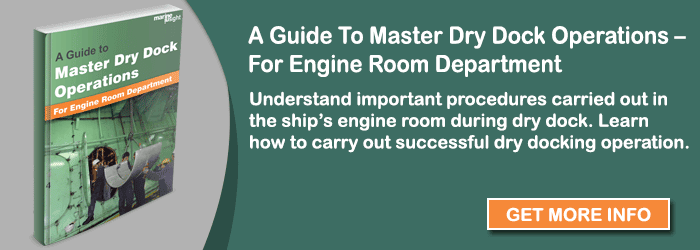
Advantages Of Using Bow Thrusters
1) Better manoeuvrability at low speeds of the ship.
2) Safety of the ship increases when berthing in bad weather.
3) Saves money due to the reduction of stay in port and less usage of tugboats.
Disadvantages Of Using Bow Thrusters
1) a huge induction motor is required, which takes a lot of current and load, and thus large generator capacity is required.
2) Initial investment is high
3) Maintenance and repairs are costly when there is damage.
The thrust force produced by the motor to move the ship will depend on various parameters, such as the hull design, power source, tunnel design, use of grids, draft and load of the vessel, etc.
The weather’s condition and the water’s state also play a vital role in BT performance.
You might also like to read:
- What’s The Importance Of Bulbous Bow Of Ships?
- How Bow Thruster is Used for Maneuvering a Ship?
- Bridge of a Ship- Design And Layout
- Nose Jobs For Ships – Reason Behind Retrofitting Bulbous Bow
- X Bow Hull Design vs Conventional Hull Design
Disclaimer : The information contained in this website is for general information purposes only. While we endeavour to keep the information up to date and correct, we make no representations or warranties of any kind, express or implied, about the completeness, accuracy, reliability, suitability or availability with respect to the website or the information, products, services, or related graphics contained on the website for any purpose. Any reliance you place on such information is therefore strictly at your own risk.
In no event will we be liable for any loss or damage including without limitation, indirect or consequential loss or damage, or any loss or damage whatsoever arising from loss of data or profits arising out of, or in connection with, the use of this website.
Do you have info to share with us ? Suggest a correction
Related Articles
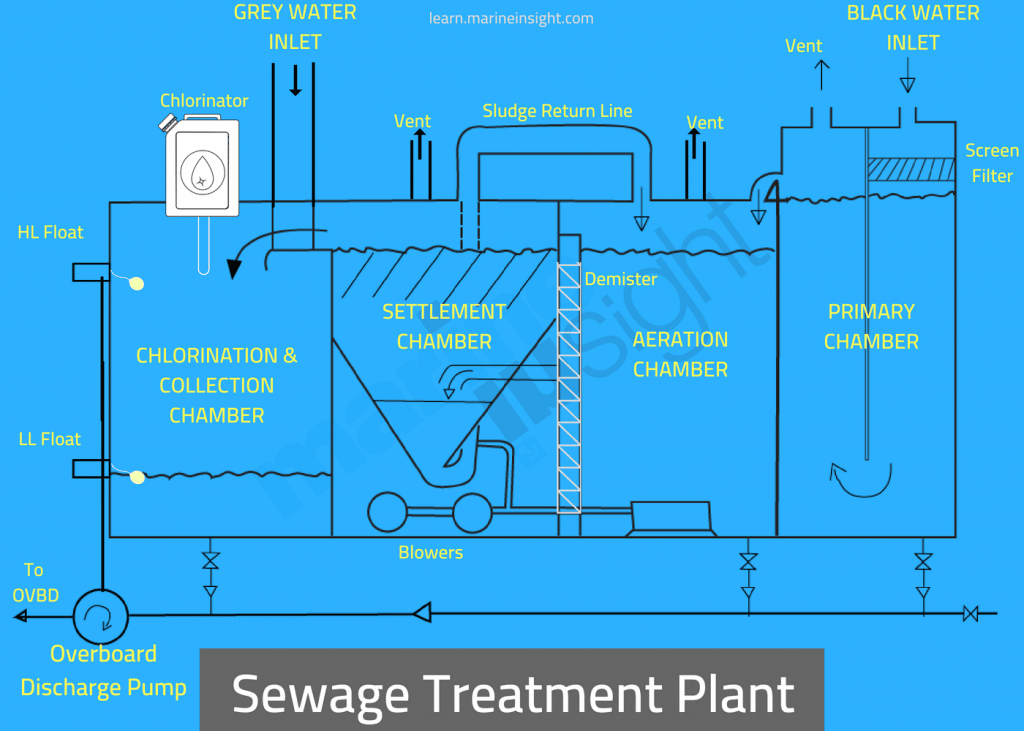
Sewage Treatment Plant on Ships Explained
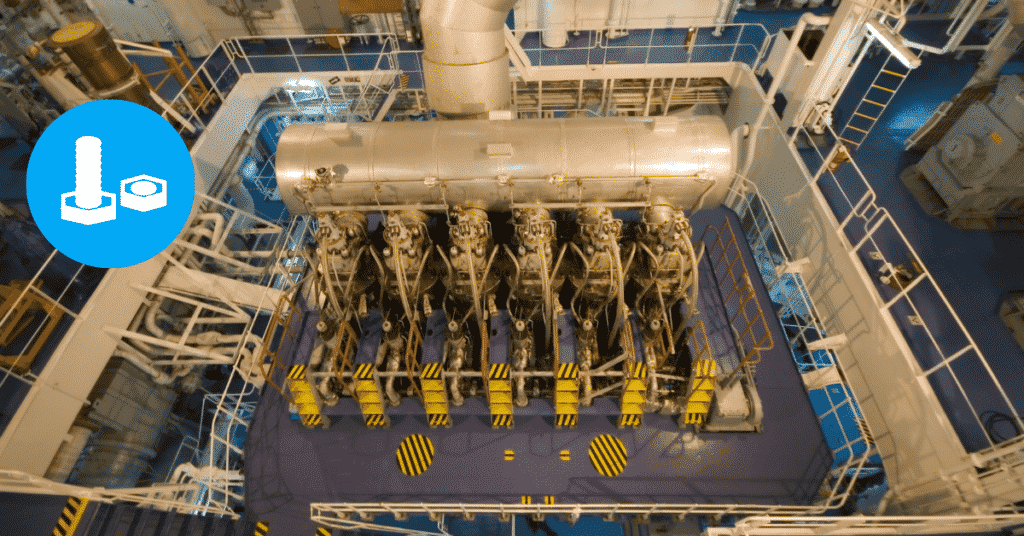
20 Important Tips to Maintain Nuts and Bolts of 2 Stroke Marine Engine
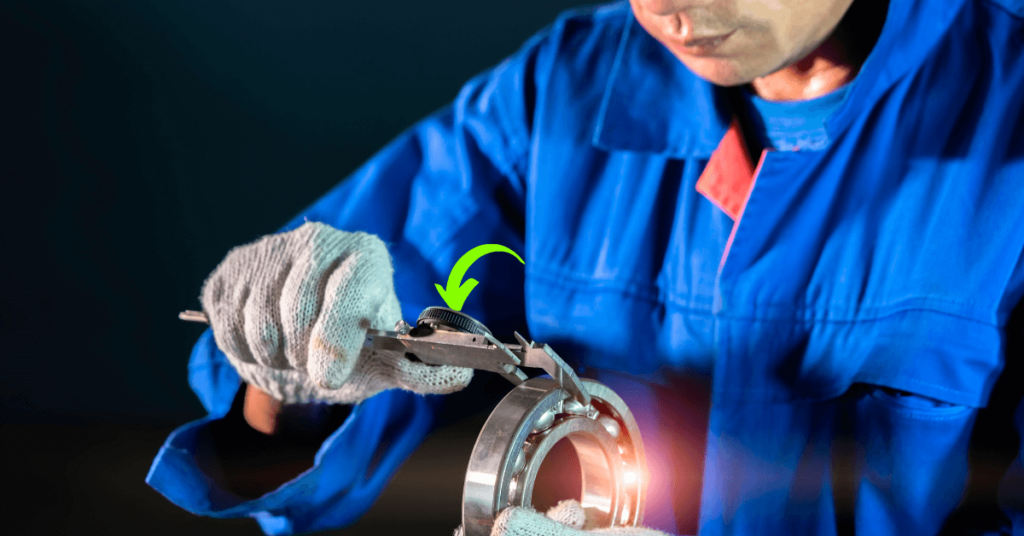
Different Types of Mechanical Measuring Tools and Gauges Used on Ships
Daily maritime news, straight to your inbox.
Sign Up To Get Daily Newsletters
Join over 60k+ people who read our daily newsletters
By subscribing, you agree to our Privacy Policy and may receive occasional deal communications; you can unsubscribe anytime.
BE THE FIRST TO COMMENT
Hi Mohit, I am a Marine and saftey advisor for a inland tanker company I have read your article about bowthrusters. Interesting. But I am looking for a graph or table or whatsoever on which you may indicate what the effect of the bowthruster is by increasing speed of the ship/barge.
In case the ship has no speed the turning point is about amidships. By increassing the speed the turning point shifts into the direction of the bow. Also the transverse force of the bowthruster (water force) will be in my opinion reduced by the by the water flowing longitudinally along the ship’s side. I thinkls at 3 knost speed the effect will be dramatically reduced. What is your opinion about that? .
what is a good brand in order to install it on a 35mt sailing boat
Hello, this information is very amazing ! Thanks, for providing this useful information.
Glad you found it useful @Swastik
Hello, why our bow thruster is not pushing harder, like no effects?
Leave a Reply
Your email address will not be published. Required fields are marked *
Subscribe to Marine Insight Daily Newsletter
" * " indicates required fields
Marine Engineering
Marine Engine Air Compressor Marine Boiler Oily Water Separator Marine Electrical Ship Generator Ship Stabilizer
Nautical Science
Mooring Bridge Watchkeeping Ship Manoeuvring Nautical Charts Anchoring Nautical Equipment Shipboard Guidelines
Explore
Free Maritime eBooks Premium Maritime eBooks Marine Safety Financial Planning Marine Careers Maritime Law Ship Dry Dock
Shipping News Maritime Reports Videos Maritime Piracy Offshore Safety Of Life At Sea (SOLAS) MARPOL
WAIT! Did You Download 13 FREE Maritime eBooks?
Sign-up and download instantly!
We respect your privacy and take protecting it very seriously. No spam!
WAIT! Did You Download 12 FREE Maritime eBooks?
Have questions? Call 1-877-325-4787 Call Now!
Dock like a Pro with Sideshift's Revolutionary Thruster Technology
Feel the Freedom. Not the Stress.
View our full range of thruster products
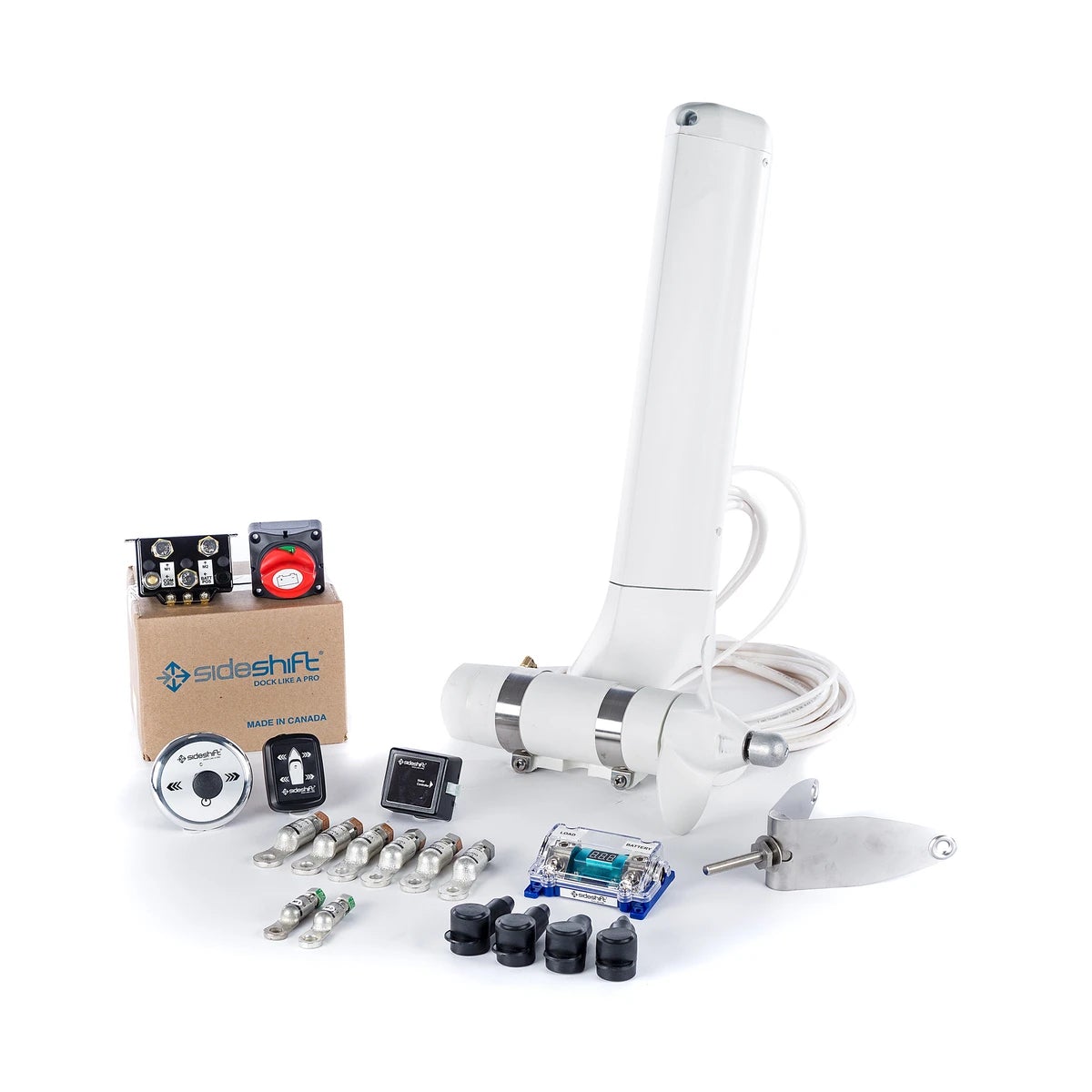
For Monohull Boats
Monohull Thrusters
From $3,995
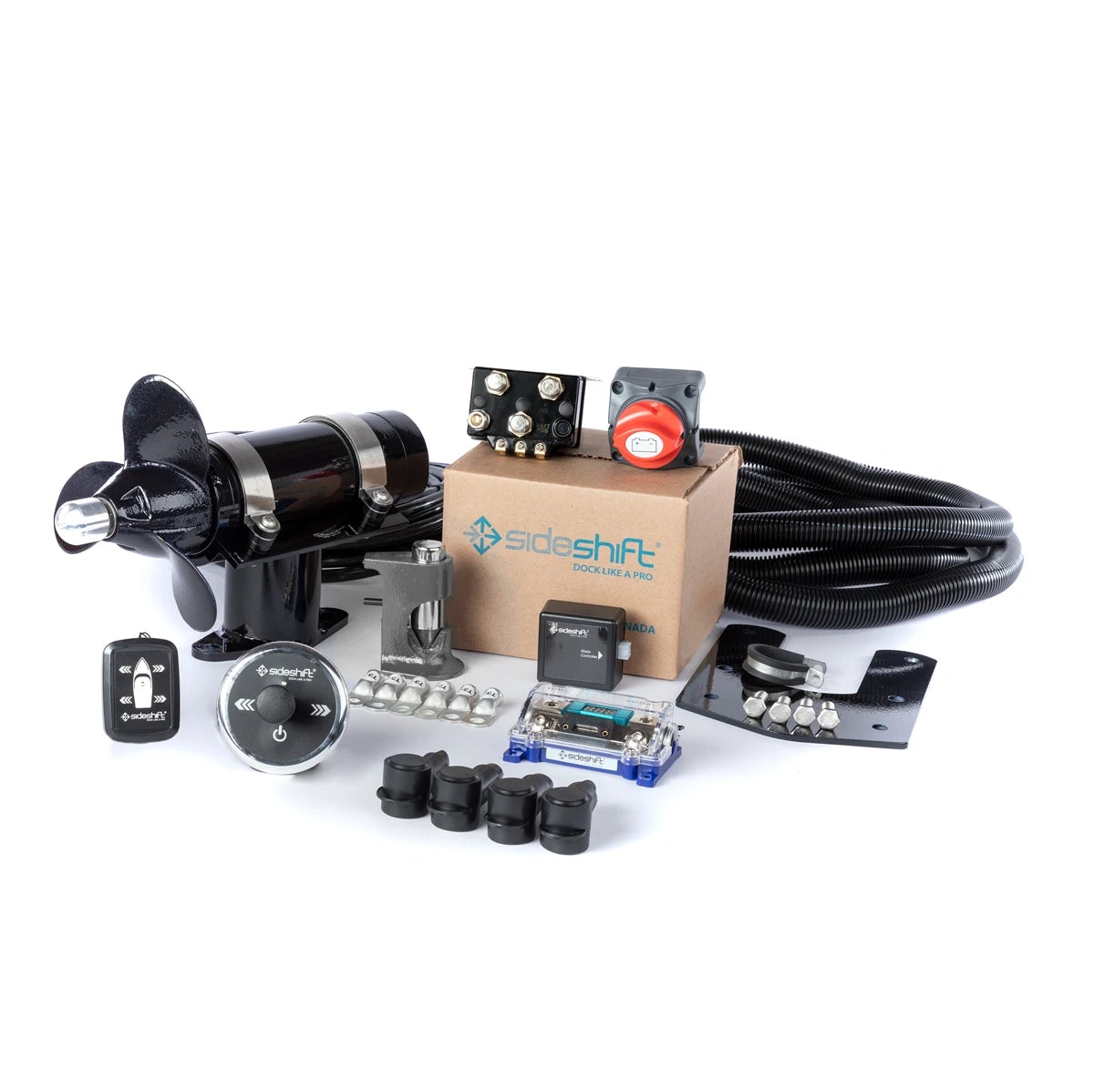
For outboard and sterndrive
Outboard Thrusters
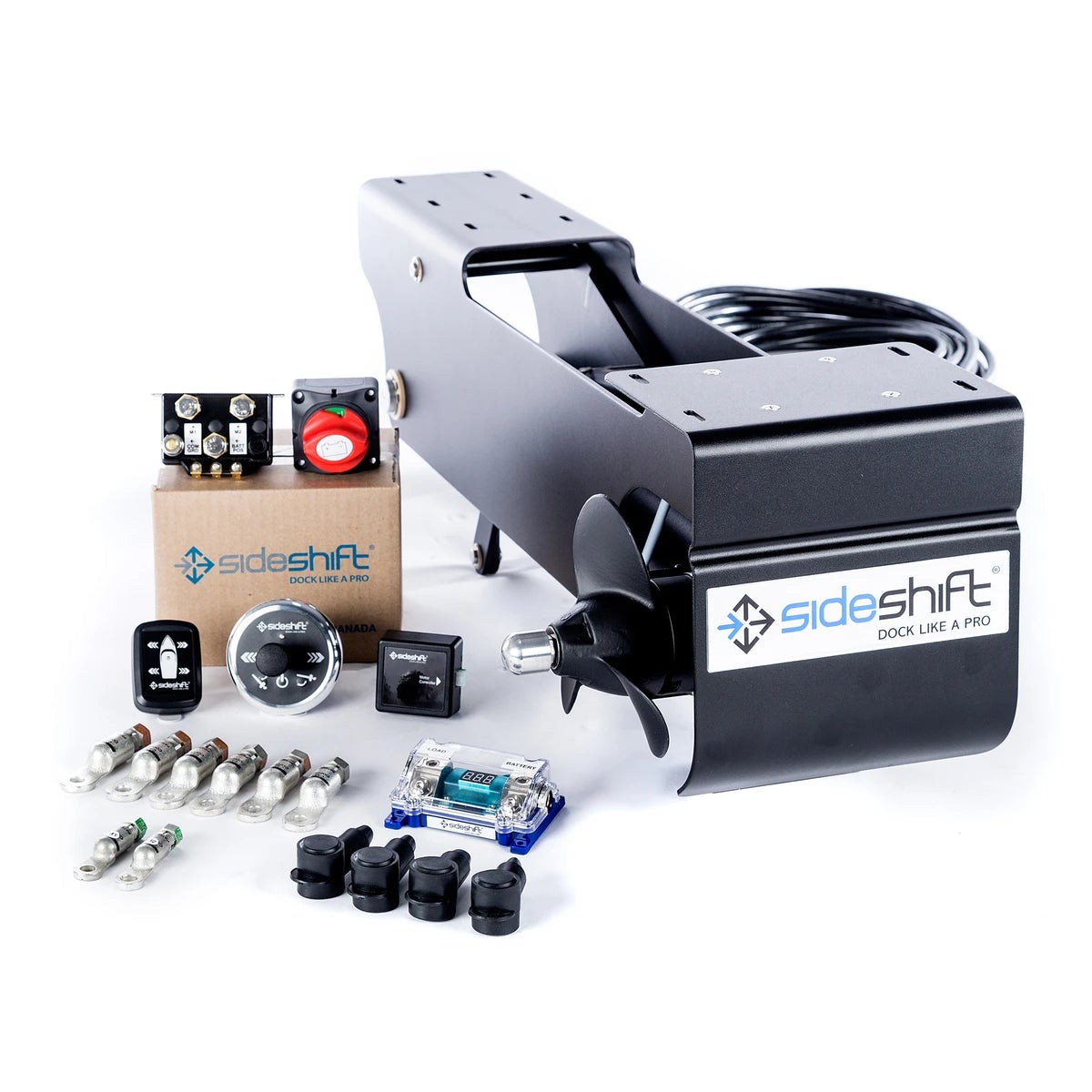
For Pontoon Boats
Pontoon Thrusters
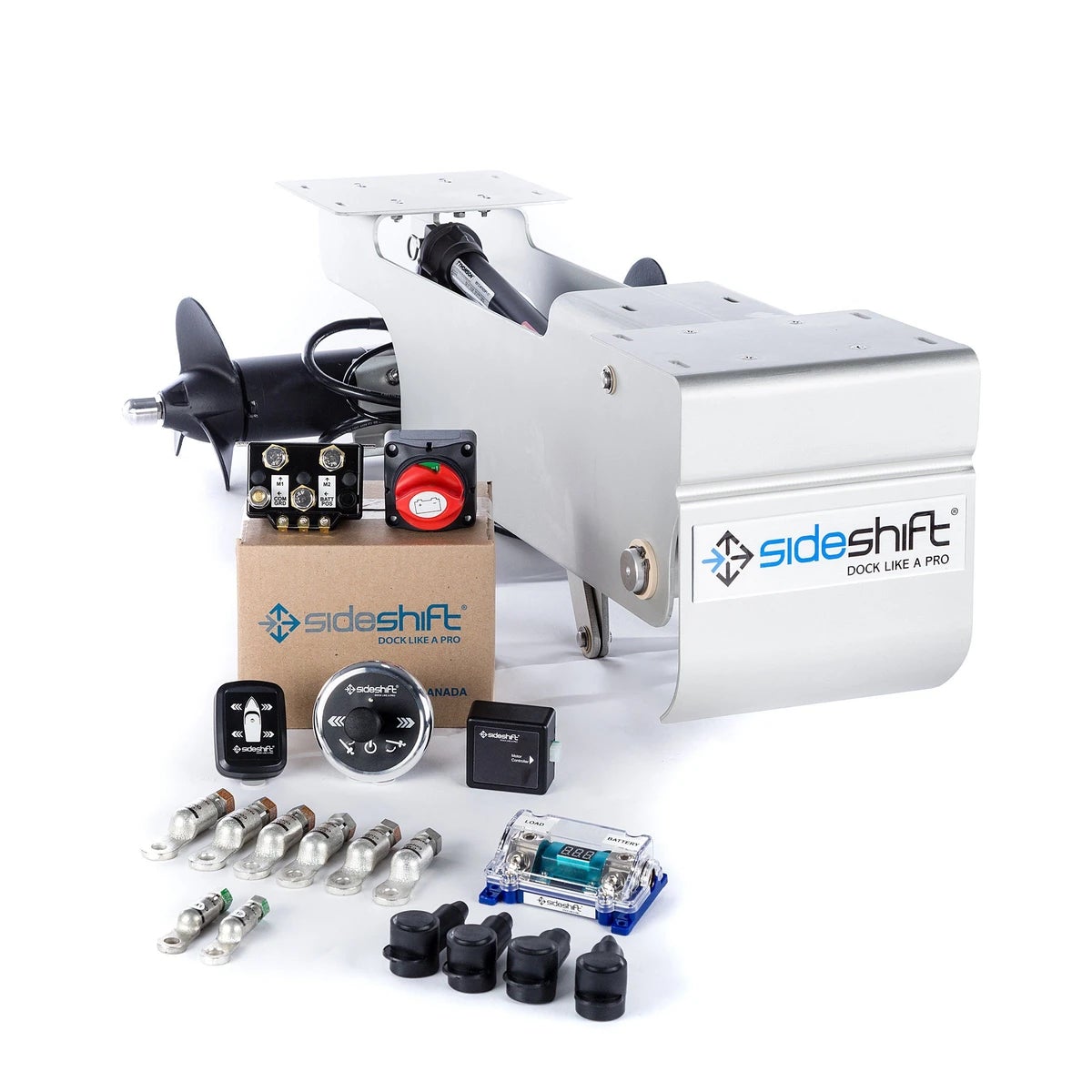
For Houseboats
Houseboat Thrusters
From $4,995
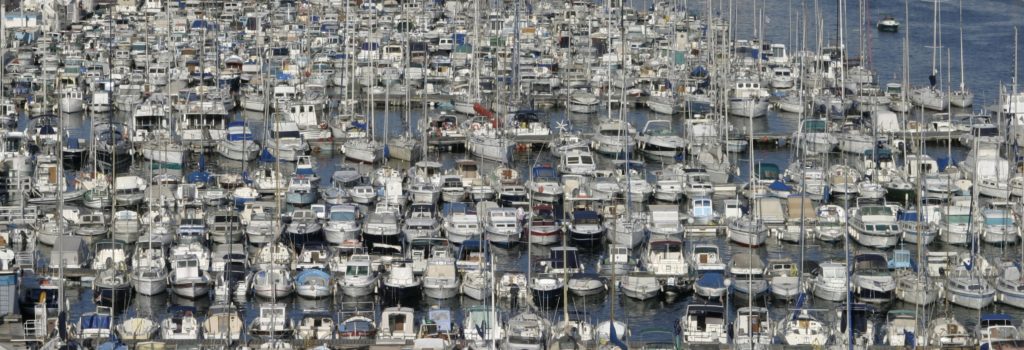
Take the Stress out of Docking
At Sideshift we do one thing and we do it well: We take the stress out of docking your boat! Our revolutionary bow and stern thruster technology sets the standard for affordable, powerful, and easy-to-install thruster solutions for all types of boats, including monohull, pontoon, and houseboats.
Since introducing the industry’s first external bow thruster in 2001, thousands of customers in over fifty countries have experienced the Sideshift difference.
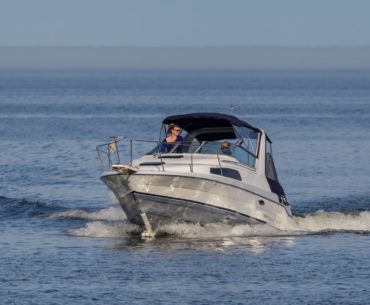
Monohull Bow and Stern Thrusters --> Monohull Bow and Stern Thrusters
Sideshift’s externally mounted bow and stern thrusters are easy to mount, with no holes below the waterline. They’re the ideal solution for any V-hull boat including cruisers, sports boats, wakeboats, sailboats, and trawlers.
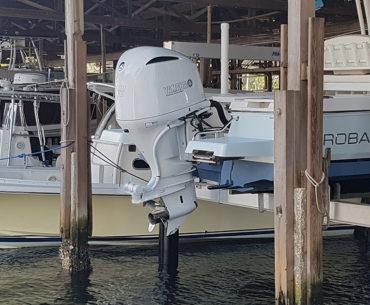
Outboard and Sterndrive Thrusters --> Outboard and Sterndrive Thrusters
Sideshift is proud to introduce the marine industry’s first (Patent Pending) outboard mounted stern thruster! Finally, an easy-to-install stern thruster solution that attaches directly to any outboard powered boat from singles to multiple engine setups.
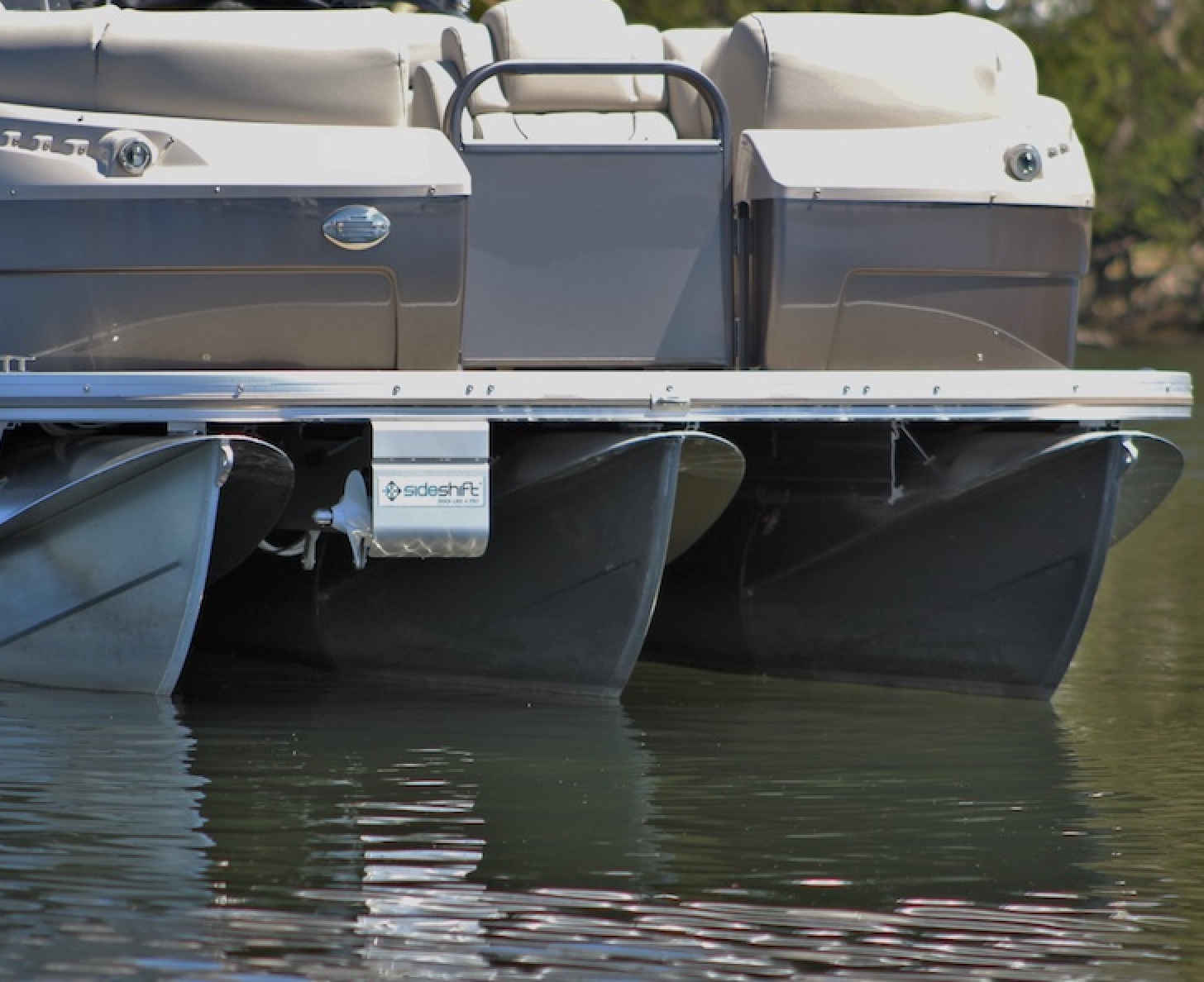
Pontoon Thrusters --> Pontoon Thrusters
Introducing the first fully retractable thruster designed for today’s modern pontoon boat. Universal mounting for any dual or triple tube pontoon boat, precision guidance is right at your fingertips with the simple joystick control.
Houseboat Thrusters --> Houseboat Thrusters
Sideshift’s series of bow and stern thrusters are specially designed for houseboats up to 80’. Fully retractable with no interference when beaching, you can now experience stress-free handling and control when docking in any situation.
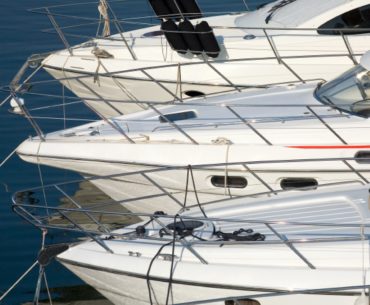
Sideshift vs. Tunnel Thrusters --> Sideshift vs. Tunnel Thrusters
Significantly lower installed cost, more responsive performance, no mounting holes below the waterline, virtually silent operation. These are only a few of the many benefits you receive when choosing a Sideshift thruster over conventional thruster systems.
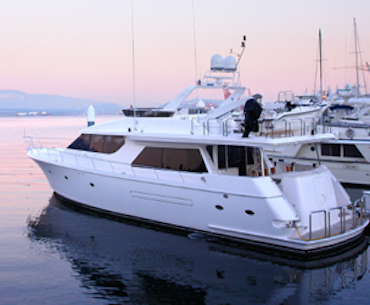
Top 10 Docking Tips --> Top 10 Docking Tips
Feel the freedom, not the stress. While a great docking experience begins with Sideshift, we have a few more tips to ensure that you maintain control in any situation.
Sign up for Sideshift News and Special Offers Below!
Select your interests:
Thank you for subscribing!
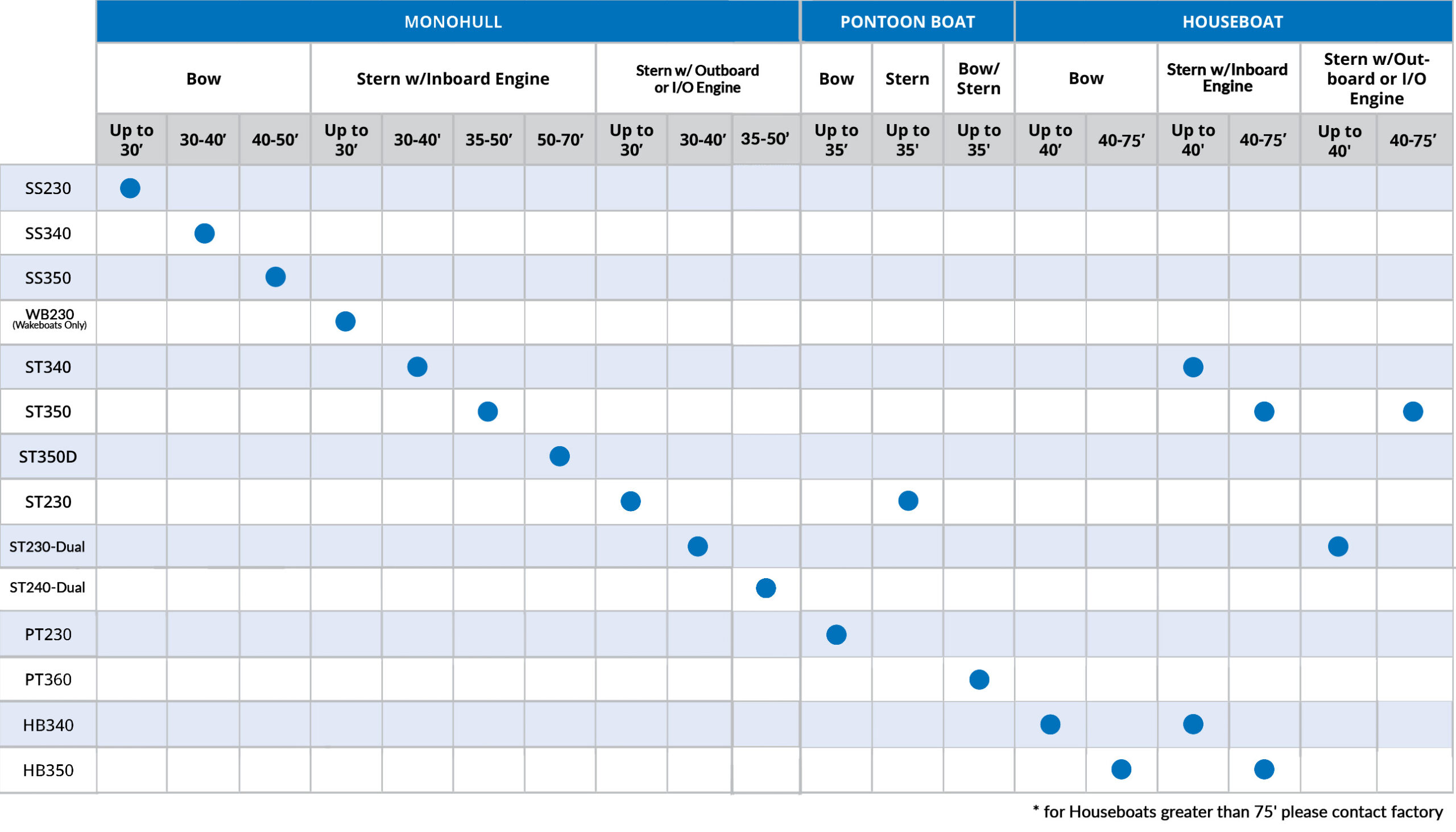

- Subscribe Now
- Digital Editions

VIDEO: How To – Use your bow thruster effectively
Our step-by-step guide shows you how to get the best from your bow thruster
Bow thrusters have become standard equipment on most craft over 30ft and even some smaller ones offer them as an option.
Almost any craft will benefit from having one and it’s certainly the one extra I would always tick on a new boat (and consider retrofitting to an older boat), especially if I were purchasing a single-engined craft or one with high windage.
We all know the basics of how to use a bow thruster, but overuse and/or poor usage often mean that skippers can cause themselves as many problems as they solve. I like to consider the bow thruster as an extra crew member who can lend a hand when needed but shouldn’t automatically be relied upon.
Electric bow thrusters have a finite period of time they can run before excess heat or power draw shuts them down. If you need to use it for that long, the chances are you are attempting the wrong manoeuvre. Some even come with a hold facility, but treat it with caution – it’s a hold for a few moments, not indefinitely.
Hydraulic ones are able to run for longer periods and can be used to hold the craft in position whilst lines are attached.
All bow thrusters are simple to use – just push the switch or lever in the direction you want the bow to go and it will follow – but there are a couple of things to watch. They really only work effectively when the boat has stopped or is moving at less than a knot – more than that and the water is moving past the thruster’s tunnel too quickly for it to be effective.
VIDEO: How To – Berth an IPS boat
Though berthing using a joystick is deemed easy, there are still some key techniques to employ when using IPS
Video: How To – Berth single-handed
Leaving or arriving at at a berth is one of the biggest boating challenges. In this video we show you
The next thing to remember is that the thruster might well be moving the bow to port or starboard but the pivot point roughly in the centre of the craft means that the stern will be going in the opposite direction. So if your crew is trying to attach a stern line and you keep thrusting the bow towards the pontoon, you are almost certainly driving the stern out and making it harder for them.
I always advise using a short burst, then a slight pause, then a second burst and even a third if needed. These short bursts are often more effective than one long one and it prevents over driving the bow, which would mean you having to stop that momentum by driving it back in the other direction.
Pauses between bursts also allow the propeller and motor to stop so that if you need to change direction you aren’t putting excessive strain on the system.
Be careful not to overdo the number of bursts, though – if the wind does take the bow many thrusters won’t be powerful enough to drive it back upwind. Far better to know when you’re fighting a losing battle and use the engines to move off safely and start the manoeuvre again.
A good exercise when berthing is to drive the bow slightly too close to the pontoon and use the thruster to push it away from the dock, helping to tuck in the stern and making it easier for the crew to attach a stern line.
Stern thrusters work in much the same way as bow thrusters, but as they tend to be fitted deeper below the water line, they are often quieter, which means that skippers tend to hold them on too long with exactly the same pivot issues as the bow thruster.
To recap, use small bursts, pause between each one and don’t forget to monitor movement at the other end of the boat as well.
How to set up depth sounders: Everything you need to know about sonar
‘we had no real plan for how to get back onto our boat’ – lessons from a man overboard, how to check your chartplotter’s accuracy, latest videos, cormate chase 32 tour: fast, stylish and practical weekender, axopar 29 sea trial: sun top vs cross cabin – which is best, sunseeker ocean 182 – see how this compact superyacht copes in a wet and windy sea trial, delphia 10 boat tour: great value family cruiser.

Service Locator
- Angler Endorsement
- Boat Towing Coverage
- Mechanical Breakdown
- Insurance Requirements in Mexico
- Agreed Hull Value
- Actual Cash Value
- Liability Only
- Insurance Payment Options
- Claims Information
- Towing Service Agreement
- Membership Plans
- Boat Show Tickets
- BoatUS Boats For Sale
- Membership Payment Options
- Consumer Affairs
- Boat Documentation Requirements
- Installation Instructions
- Shipping & Handling Information
- Contact Boat Lettering
- End User Agreement
- Frequently Asked Questions
- Vessel Documentation
- BoatUS Foundation
- Government Affairs
- Powercruisers
- Buying & Selling Advice
- Maintenance
- Tow Vehicles
- Make & Create
- Makeovers & Refitting
- Accessories
- Electronics
- Skills, Tips, Tools
- Spring Preparation
- Winterization
- Boaters’ Rights
- Environment & Clean Water
- Boat Safety
- Navigational Hazards
- Personal Safety
- Batteries & Onboard Power
- Motors, Engines, Propulsion
- Best Day on the Water
- Books & Movies
- Communication & Etiquette
- Contests & Sweepstakes
- Colleges & Tech Schools
- Food, Drink, Entertainment
- New To Boating
- Travel & Destinations
- Watersports
- Anchors & Anchoring
- Boat Handling
- ← Seamanship
How To Use A Bow Thruster
Advertisement
Want better control and more confidence in your boathandling skills? A bow thruster may be just the ticket.

Photo: IMTRA/side power
Bow thrusters often get a bum rap, particularly from boating purists who view them as somehow cheating when it comes to learning proper seamanship. While that view may be extreme, in the old guard's defense there's nothing more frustrating (or entertaining, depending on your vessel's location) than watching a boat bump into docks and nearby vessels due to wild manipulations of the bow thruster and a lack of basic boathandling skills. On the plus side, installation of a bow thruster can mean greater confidence at the helm, safer docking, and more time on the water. If you've been sitting on the fence, here's a look at the basics of bow thrusters to help you decide if installing one is right for you.
What They Are — Pros & Cons
A bow thruster is simply a propulsion device located at the bow that provides lateral (port and starboard) thrust, making the vessel more maneuverable. Bow thrusters often come as standard equipment on newer pleasure boats over 45 feet, but almost any midsize vessel can be retrofitted. The benefits of having a bow thruster are many, particularly for boaters who must routinely deal with gusty winds, strong currents, or crowded docking spaces. Maneuvering in tight areas is much easier, as a thruster allows the operator to turn the vessel to port or starboard without forward motion. This is particularly helpful with high-windage powerboats or sailing vessels with long, full keels.
Another benefit is the greater level of independence and confidence a thruster can offer, both to beginner and experienced boaters alike. Novice operators are more likely to actually get underway in more challenging conditions, while experienced captains can expand their options (sailing solo, for example) with greater safety. In both cases, installing a bow thruster is like recruiting a trusted crewmember, one that's always ready to lend a hand when pushing (or fending) off from a dock. A wireless control unit adds more convenience, allowing you to move around the boat while controlling the thruster. Imagine picking up that mooring ball with minimal effort (and shouting) or boarding without having to pull on a single dockline, bringing the boat to you with the push of a button.
As a final plus, you're also likely to enjoy a financial benefit when it's time to sell. Having a bow thruster will make your boat more attractive than similar boats on the market. This is particularly true for new or less experienced boat owners, who may not be comfortable handling larger boats in less-than-ideal conditions. And unlike other major upgrades such as engines or generators, most buyers don't care when a bow thruster was installed, as long as it works.
While the benefits of having a bow thruster installed are numerous, so, too, are the concerns with installing them. The first is cost. Although this will vary widely among the different makes, models, and styles (traditional tube units versus externally mounted ones, for example), you can expect purchase and installation of even the smallest, most economical unit to be around $5,000.
In lockstep with the above is the complexity of your particular installation. What's the best location? Will that water tank under the V-berth have to be shifted aft or relocated altogether? How powerful should it be? Will the extra weight in the bow affect performance? Will the installation void my hull warranty? All of these are valid concerns you'll want to research and review when considering any installation.
Finally, while thrusters are certainly helpful, they do not excuse you from mastering basic boathandling skills. You'll still need to know how to maneuver your boat in a wide range of conditions should your extra "crew member" ever go on strike.
Choosing A Bow Thruster
Installing a thruster can involve some major surgery, depending on the type selected and the design of your particular vessel. As such, you'll want to thoroughly research the various options available in order to select the one that's right for you.
Selecting a unit that's powerful enough to meet your performance requirements while matching the characteristics of your boat (type, size, hull shape) is crucial to getting the most benefit from your installation. Thruster performance is determined primarily by a vessel's windage and correct thruster location. Vessel weight is not typically a major factor in thruster selection for pleasure craft, unless they routinely operate in areas where the thruster will be constantly needed to counter strong currents or winds.
Some companies allow you to select a unit based on vessel characteristics such as length and displacement, but it's always a good idea to get a second opinion from a professional, particularly if dealing with unusual installation requirements. Once you decide to install a thruster, you'll need to make several choices including power source, mounting type, and number of propellers.
Electric Or Hydraulic?
From a power standpoint, bow thruster choices come down to two options, electric and hydraulic. Electric units can be further divided into 12- or 24-volt DC types, or even the occasional AC-powered unit, although DC power is a lot more popular and our focus here.
Hydraulic thrusters are a common choice for larger vessels, particularly those that already have hydraulic systems onboard to power the windlass or dinghy davits. Installing a hydraulic unit while utilizing an existing centralized hydraulic power source costs less and will greatly simplify the installation. Hydraulic thrusters are quieter than electric thrusters, have greater thrust, and can operate for extended periods of time without the worry of overheating or draining battery banks. They can also provide variable-speed control with proportional control and valves. Unless you already have hydraulic systems onboard, however, electric units will typically be a more economical choice.

An example of a thruster battery and charger installation.
Of the two electric options, 24-volt DC systems have some notable advantages — including the ability to use smaller wire and a lower voltage drop — and are particularly attractive for larger boats with high-power requirements. As with hydraulics, unless your boat already utilizes a 24-volt system onboard, a 12-volt system usually means a less complex installation, as the thruster can often be wired directly into your boat's existing system. For that reason, 12-volt DC systems are more commonly found on midsize boats.
A typical electric thruster installation involves either running cables of sufficient size to minimize voltage drop from an existing battery bank, or installing a dedicated battery in the vicinity of the thruster along with a method of charging it. As they likely won't be used at the same time, a third option might be piggybacking off an electric windlass circuit.
A dedicated battery installed close to the thruster has a few advantages. Keeping the battery next to the thruster minimizes voltage drop due to the shorter cables, while the closed circuit provided by a dedicated battery ensures other DC-powered systems and equipment won't be affected by voltage drop when the thruster is in use.
While each of these systems will work if properly designed, the choice typically boils down to installation obstacles, space, and expense (the cost of those heavy cables as compared to a dedicated battery and charger, for example).
Tunnel Bow Thruster Or External Unit?
Tunnel-mounted bow thrusters require a tube or tunnel to be installed through the hull below the waterline, with the unit's prop(s) located inside. For best performance, the installation tube has to be placed as far forward as possible, yet deep enough below the waterline to generate maximum thrust and avoid sucking air, two competing requirements not always possible on boats less than 30 to 35 feet.

A single prop, tunnel-mounted bow thruster.
The need to cut two large holes in your bow and the installation of the tube itself add significantly to the overall costs of the project. The drag produced by the installation can also be a concern to some, although the reduction in speed will typically be less than half a knot. As to tube size, you'd think bigger is better, but a smaller-diameter tunnel actually has a number of advantages over larger ones. In addition to the obvious benefit of requiring you to cut smaller holes into your hull, a smaller tube can be installed farther forward, which increases the distance between the thruster and the pivot point of the vessel. This increased leverage means greater turning force, a plus when moving larger vessels.
With planing hulls, being able to place a smaller-diameter tube farther forward may even be enough to locate the tube so that it's completely out of the water while the vessel is underway, which reduces both drag and fuel consumption. Finally, a smaller, shorter tube has less water inside it, which reduces weight, increases buoyancy, and improves fuel economy.
Externally mounted units are an attractive alternative for boat owners who have internal layout restrictions that prevent installation of a tunnel-mounted bow thruster or for those who simply cringe at the thought of cutting large holes in their hull. One external brand, the Yacht Thruster, requires drilling a one- to two-inch hole (depending on the size of the unit chosen) to attach it via a threaded pipe, which is also used to route cabling. Another external option is the Sideshift bow thruster, which mounts to a vessel's stem and uses no holes below the waterline in its installation. In fact, the manufacturer states it can be installed while the boat is in the water. These units, while simpler to install, are also exposed, making them more vulnerable to impact damage.
Single Or Dual Propeller?

Another consideration when selecting a bow thruster is whether to go with a single-prop unit or a dual, counter-rotating-prop version. Single-prop units cost less than comparably sized dual-prop versions; however, the dual-prop units are more efficient. Counter-rotating props produce roughly 40 percent more thrust than a single-prop unit while using the same amount of horsepower. With single-prop units, a lot of energy is lost in the swirling motion of the water. Counter-rotating units, where the second prop is spinning in the opposite direction, are able to recapture and refocus the energy of this swirling water to increase their maximum thrust. Another plus for dual-prop units is that smaller props and tubes can be used to produce the same amount of thrust, compared to a single-prop unit. Smaller tubes, as discussed earlier, mean better positioning and control.
Better Control = More Fun
The ability to competently and confidently maneuver a vessel (particularly a single screw vessel) in challenging conditions is an art form, one that doesn't come in a flash of inspiration. It takes practice. To many, myself included, nothing beats the satisfaction of melding the effects of wind, current, and the knowledge of your vessel's handling characteristics into a successful docking maneuver under challenging circumstances. That said, a bow thruster is simply another tool — one of many that boat owners use while on the water in their best efforts to get from point A to point B as safely and with as little stress as possible. I don't view their use as some sort of crutch to my boathandling skills. They're like a can of bear pepper spray. If you've ever really needed one — and had it to use it — you're a convert for life.
- Imtra/Side Power
- Yacht Thruster
Related Articles
The truth about ceramic coatings for boats.
Our editor investigates the marketing claims of consumer-grade ceramic coatings.
Fine-Tune Your Side Scan Fishfinder
Take your side-scanning fishfinder off auto mode, and you’ll be spotting your prey from afar in no time
DIY Boat Foam Decking
Closed-cell foam flooring helps make boating more comfortable. Here’s how to install it on your vessel
Click to explore related articles
Frank Lanier
Contributing Editor, BoatUS Magazine
Capt. Frank Lanier is a SAMS Accredited Marine Surveyor with more than 40 years of experience in the marine and diving industries. He’s also an author, public speaker, and multiple award-winning journalist whose articles on boat maintenance, repair, and seamanship appear regularly in numerous marine publications worldwide. He can be reached via his YouTube channel “Everything Boats with Capt. Frank Lanier” and website captfklanier.com.
BoatUS Magazine Is A Benefit Of BoatUS Membership
Membership Benefits Include:
Subscription to the print version of BoatUS Magazine
4% back on purchases from West Marine stores or online at WestMarine.com
Discounts on fuel, transient slips, repairs and more at over 1,200 businesses
Deals on cruises, charters, car rentals, hotel stays and more…
All for only $25/year!
We use cookies to enhance your visit to our website and to improve your experience. By continuing to use our website, you’re agreeing to our cookie policy.

- Buy A Yacht
- Super Yachts for Sale
- Motor Yachts for Sale
- Trawlers for Sale
- Sportfisherman for Sale
- Sailboats for Sale
- Trailerable Boats for Sale
- Search by Yacht Builder
- CSA Yacht Map- Distance/Zip/Go!
- Commercial Marine Vessels for Sale
- Great Loop Boats for Sale
- Great Loop FAQ
- Albemarle Loop
- General Boat Articles
- Technical Boat Articles
- Build a Yacht
- Charter A Yacht
- Yacht and Boat Donations
- Yacht Buyer Brokerage Service
- Partnerships- Curtis Stokes & Associates
- About Curtis Stokes & Assoc.
- Yacht Photo Gallery
- Yacht Links
- Yacht Broker Employment
- Sold Motor Yachts
- Sold Trawlers
- Latest Yacht Listings

Island Angel 1986 | 62' Marine Trader Med Yacht w/ Cockpit Motor Yacht for Sale
1986 marine trader, 62' (18.90m) med yacht w/ cockpit - island angel, island angel is a pilothouse motoryacht with aft deck and cockpit. she has four (4) staterooms, four (4) vacuflush heads..
- Houma Louisiana United States
- Med Yacht w/ Cockpit
- Fiberglass Hull
$ 299,000 USD
€ 280,881 euros $ 411,536 cad.
- EMAIL BROKER
Description
LOA: 62' " (18.90 Meters)
Type: Power - Used
Beam: 17' 6"
Bridge Clearance: ' "
Draft Max: ' "
Draft Min: ' "
Maximum Speed: Knots
Cruise Speed: Knots
- Fuel Type: Diesel
Hull Material: Fiberglass
Fuel Tank: Gallons ( Liters)
Fresh Water: Gallons ( Liters)
Holding Tank: Gallons ( Liters)
Full Details
Vessel specifications.
ACCOMMODATIONS
- Layout: Master stateroom forward with island pedestal berth, TV and privacy door. A circular door closes off the starboard sitting room/guest cabin with a full sized bed and a convertible upper bunk.
- The large head compartment features a large separate shower stall and a vacuflush commode.
- 2021 Mauve convection, grill, microwave oven
- Description - L-shaped galley with separator between counter and seating area
- Refrigeration - 2021 Vitrofrigo Stainless Steel refrigerator/freezer
- Oven - Deluxe propane oven with 2 x burners plus grill
- Hot & cold pressurized water system: Jabsco Par 12VDC
- 120 VAC Water Heater 11 Gallons
- STOVE SAFETY SWITCH: LPG safety switch
- WET/DRY BAR AREA: GE dishwasher.
HEAD COMPARTMENTS
MASTER HEAD: Enclosed head compartment with vanity sink, DC electric toilet and enclosed shower/tub. Sealand Vacuflush 12 VDC.
GUEST HEAD#1: Enclosed head compartment with vanity sink, DC electric toilet and enclosed shower. Sealand Vacuflush 12 VDC.
GUEST HEAD#2: Enclosed head compartment with vanity sink, DC electric toilet and enclosed shower. Sealand Vacuflush 12 VDC.
DAY HEAD#3: Enclosed head compartment with vanity sink, DC electric toilet Sealand Vacuflush 12 VDC.
Original crew quarter head compartment disabled and converted to storage locker.
ELECTRONICS
- BATTERIES: Fourteen (14)
- Eight (8) / 6VDC / Aft Stateroom Port Bench Seat
- Four (4) / Group 8D / Engine Compartment
- Two (2) / Group 8D / Forward Bilge
Newmar Phase Three PT- 70A - 12VDC 70 amp battery charger
ProSport 12, 12 VDC – 12A battery charger serving bow thruster battery bank.
Parallel through battery switches.
Three (3) Battery Banks
Bank 1 (2) 8D - 12 VDC wet cell Engine / Genset start. Wired in Parallel for 12 VDC.
Bank 2 (14) 6 VDC wet cell sealed House service. Wired in Parallel/Series for 12 VDC.
Bank 3 (2) 8D - 12 VDC wet cell Bow thruster. Wired in Series for 24 VDC.
Rotary style ( 2 ) ON/OFF, ( 1 ) Selector & Disconnect switch
AC VOLTAGE: 120/240 VAC Ships service.
SHOREPOWER INLETS: (2) 50A - 120/240 VAC. Forward and Aft
Analogue Volt and Amp meters.
GFCI PROTECTION
DECK & HULL
Hull section is planning hull modified vee style with hard chines. All fiberglass reinforced plastic laminate construction. Hull is solid laminate and decks are cored laminate, all hand laid contact molded. All decks and super structure / hull sides noted over coated with paint over original gelcoat finish. Professional application and finish.
Deck plan: Portugese bow forward, raised pilothouse/salon superstructure
amidships, and open aft deck with cockpit aft. Covered side deck walkways.
Open flybridge with single helm.
Interior wheel house enclosed with single helm.
SWIM PLATFORM: Full swim platform teak wood slat.
SWIM LADDER: Stainless steel fold down swim ladder at swim platform.
BOARDING LADDER
GANGWAY: Cantilever style boarding stair set aluminum.
FLYBRIDGE LADDER: Exterior stainless steel framed flybridge ladder.
Interior wood frame flybridge ladder from pilothouse to flybridge.
Pedestal helm chair ladder back at flybridge.
Stainless steel Framed Venturi style / Low profile style windshield at flybridge.
Aluminum Framed windows on superstructure forward, side and aft.
Stainless steel port lights on hull sides.
Full transom door to port.
Stainless steel tube framed large Bimini top without canvas cover over flybridge.
Cockpit fixed frame sunshade.
Teak gunnel and teak hand rail canvass covers.
- BOW PULPIT: 1 1⁄4 IN Stainless Steel
- STERN PULPIT: - Bulwark
- DECK STANCHION: 1 1⁄4 IN Stainless Steel
- LIFE LINES: - Grab Rails
- BOW CLEATS: 14 IN Stainless Steel w/ Integral Fairleads
- MID-SHIP CLEATS: 12 IN Stainless Steel w/ Integral Fairleads
- STERN CLEATS: 14 IN Stainless Steel w/ Integral Fairleads
- 110 lbs Barnacle Hinged-Plow
- Fortress FX-55
- Stainless Steel, Delta Type
- ANCHOR RODE: - -
- Chain 250 Ft. 7/8” Galvanized
- Windlass Maxwell 24VDC 4000
- FIRE EXTINGUISHERS: Seven (7) BI One (1) BII
- Engine Room FIXED EXTINGUISHING: FE-241
- BILGE PUMPS: Six (6) submersible DC service bilge pumps with automatic switches.
- (1) Lazarette 1,500 GPH
- (2) Engine room bilge. 1,500 GPH
- Master stateroom galley 1,500 GPH
- (2) Forward bilge. 1,500 GPH
- Manual: Diaphram style manual bilge pump.
- PFD'S: Seven (7) Type I Adult Five (5) Type II Adult NO. OF TYPE IV PFD'S: One
- (1) Lifesling
- DISTRESS FLARES: Ten (10) + Locate Three (3) Alert One (1) Gun
- HORN: One (1) 12VDC
- BELL: One (1) -
- FIRST AID KIT: One (1) -
- NAVIGATION LIGHTS: - Standard
- LIFE RAFT: One (1) Avon
- SMOKE DETECTORS: Two (2) UL
- FUEL (DIESEL): **Four (4) Black Iron 1,260 gallons total **930 Gallons (310 ea)
- SHUT OFF LOCATION: At Tank -
- **2019 Reported by seller that starboard aft fuel tank is drained & unusable due to a rusted hole in tank bottom. Fuel capacity shown above is actual remaining capacity of three tanks.
- Sight tubes on tank fitted with valves at each end.
- POTABLE WATER: One (1) Coated Aluminum 250 Gallons
- PLUMBING: Copper Tubing & - Reinforced Rubber Hose - PRESSURE SYSTEM: Jabsco Par 12VDC -
- WASTE: Two (2) Plastic 200 Gallons (100 ea)
- OIL: Two (2) Stainless Steel 40 Gallons (20 ea) FUNCTION: One (1) Clean / One (1) Used Oil - PUMP IN/OUT: DC -
- OIL CHANGE SYSTEM: 12 VDC Oil change pump and manifold set.
TOILET PUMPS: (4) 12 VDC Vacuflush Diaphram toilet pumps.
MISCELLANEOUS PUMPS: 12 VDC Fuel priming pump.
- Water maker sea water supply pump 110 VAC.
- HEADS: Four (4) Sealand VacuFlush -
- PUMP OUT: DC -
GENSET #1:Phasor MODEL: K4/21 (21 KW), SERIAL #106002 located in forward engine room.
550 Hours
Racor 500 fuel filter
No Sound Shield
GENSET #2: Northern Lights MODEL: M843JK.3 (10 KW) SERIAL #: 8432-33133C located on shelf above Phasor genset
Racor 500 fuel filter.
OEM hardcase sound shield.
LOCATION: C/L forward engine room on shelf above Phasor genset.
ENGINE MACHINERY, STEERING AND CONTROLS
- Twin Turbo Diesel Inboard Caterpillar 3208T, 310 H.P. each @ 2,800 RPMs.
- ENG. SERIAL NO.: (Port) 01Z03668 (Stbd) 01Z03622
- Fuel Filter Primary - Racor 1000
- Fuel Filter Secondary - Engine Mounted Canister
- TRANSMISSION: Caterpillar (Twin Disc) hydraulic clutch reverse reduction gears
- TRANS. MODEL: MG506 LH/RH
- TRANS. SERIAL: (Port) 3K2753 (Stbd) 3K1767
- Analogue electric instrumentation at both helm stations.
- PROPELLERS: Two (2) Bronze, 4-Blade 28x26
- SHAFTS: Stainless Steel, 2 1/2 IN
- CUTLESS BEARING: Bronze/Rubber
- ZINCS: Eleven (11)
- RUDDER: Bronze
- STEERING SYSTEM: Teleflex Capilano
- Air Conditioning: Cruisair Reverse Cycle, self-contained and split type systems.
- Saloon 24,500 Split type system.
- Master stateroom 16,500 Self-contained system.
- Pilothouse 16,500 Self-contained system.
- (2) Guest stateroom 16,500 Self-contained system.
- V-berth 6,000 Self-contained system.
- A/C PUMP: (2) 110 VAC air condition cooling water pump assemblies.
- Wesmar 24 VDC drive bow thruster.
- Flybridge / Pilothouse locations.
- Seastar manual hydraulic steering system.
- Two helm units with wheel steering
- Electronic engine synchronizer.
- Dual lever DC electric engine and transmission controls at both locations.
- Bronze through hulls fitted with valves.
- Bronze and Lexan and external hull mounted strainers at through hulls.
- Dripless seal style packing glands.
- Bronze rudder logs with compression style packing glands.
11’ 4”’ Boston Whaler Tender
- Low profile box construction tender davit 12 VDC.
- 9.9 Mariner outboard motor
- wooden cradles (can be removed when not used to open a dance floor)
HISTORY OF VESSEL
Island Angel has been owned by the current knowledgeable owners since 2016. They are ready for different adventures and are excited about Island Angel ’s next chapter.
- Nov 2011 teak decks were removed and boat was painted from waterline up with Awlgrip
- 2013 - bottom was stripped & dried before a West System Barrier coating was applied.
RECENT UPGRADES
Continuing maintenance by knowledgeable owner:
- Bottom painted with Petit Trinidad May 2024
- Starting Batteries replaced August 2023
INOPERABLE / IN NEED OF ATTENTION
The asking price accounts for the following systems that are inoperable or in need of attention:
- Minor wear and tear levels to both hard and soft goods.
- Minor water damage to wood bulkhead in starboard guest stateroom.
- 2019 Reported by seller that starboard aft fuel tank is drained & unusable due to a rusted hole in tank bottom. Fuel capacity shown above is actual remaining capacity of three tanks.
- Westmar stabilizers pined and not operational.
- Engine Make: Caterpillar
- Engine Model: 3208T
- Engine Year:
- Engine Type: Inboard
- Drive Type:
- Power HP: 310.00
- Hours: 4935.00
Click any image to view enlarged version. Swipe enlarged image to see additional enlarged images.

Contact Broker
For more information about this yacht please contact Curtis Stokes and Associates, Inc. We look forward to working with you!
Want more information about this yacht?
Curtis stokes & associates.
Suite168 --> Fort Lauderdale, FL Phone: 1-954-684-0218 Toll Free: 1-855-266-5676 Fax: 1-954-807-1445 Email: [email protected] Website: https://www.curtisstokes.net
Curtis Stokes and Associates, Inc. is a yacht brokerage firm consisting of nine offices and fifty brokers throughout the United States offering worldwide marketing, buyer brokerage services and yacht charters. We also specialize in marketing and selling Great Loop capable yachts and boats.
- Sailing Yachts for Sale
- Albin Yachts for Sale
- American Tugs for Sale
- Bayliner Boats for Sale
- Beneteau Yachts for Sale
- Bristol Yachts for Sale
- Californian Yachts for Sale
- Camano Trawlers for Sale
- Catalina Sailboats for Sale
- Cruisers Yachts for Sale
- DeFever Trawlers For Sale
- Downeast Cruisers for Sale
- EndeavourCat Trawlers for Sale
- Gulfstar Sailing Yachts
- Grand Banks Trawlers for Sale
- Great Harbour Trawlers for Sale
- Hatteras Yachts for Sale
- Hatteras Long Range Cruiser Trawlers for Sale
- Heritage East Trawlers for Sale
- Meridian Yachts for Sale
- Hunter Marine Sailboats for Sale
- Jefferson Yachts for Sale
- Kadey Krogen Yachts for Sale
- Mainship Trawlers for Sale
- Marine Trader Trawlers for Sale
- Monk Trawlers for Sale
- Nordic Tugs for Sale
- Ocean Alexander Yachts for Sale
- Pearson Yachts for Sale
- Sea Ray Boats for Sale
- Selene Trawlers for Sale
- Silverton Yachts for Sale
- Trinity Yachts for Sale
- Viking Yachts for Sale
- Motor Yachts for Sale Archive
- Trawlers for Sale Archive
- Yachts by Builder
- Search Yachts for Sale
- Sell A Yacht
- Build A Yacht
- About Curtis Stokes & Associates
- Frequently Asked Questions
- Great Loop Cruisers
- Yacht Resources
© 2024 Curtis Stokes & Associates, Inc. | All rights reserved.


Asking $ 1,790,000
- Yachts for Sale
PURA VIDA Yacht for Sale
Not for sale or charter to U.S. residents while in U.S. waters.
The Magellano 66 was engineered for exceptional stability and fuel efficiency. She has a Proven hull design that ensures a smooth, comfortable ride, even in challenging conditions. With an unwavering attention to detail that is evident in every corner she will satisfy any demanding owner.
Specifications, accommodations, dimensions & capacity, construction, engines (x2).
Complete the form below and one of our experienced sales brokers will be in touch soon.
Full Details
Equipment and options list.
MARAD Certified vessel , TAX PAID and US Documented but never chartered. Owner just wanted to have available all the certifications available to the yacht. She has been Captain maintained and always privately used.
Vessel is used for slow speed cruises in the ICW or off the coast of Florida.
In her Annual Shipyard period that was completed in the end of December 2023 all the bottom works have been completed including cutlass bearings.
OPTIONS LIST:
Volvo D13 800 Hp each.
Seakeeper SK 9000
Seakeeper control station on fly
Canopy Sun shades at flybridge and bow area
Central vacuum system
Bow seating area with Coffee/ Cocktail table
Fourth cabin upper and lower bunk beds
Hard top with convertible soft top / awning
Painted hull
Hydraulic Passarelle
Bow & stern thruster
Teak on all deck areas
Hydraulic Swim Platform
Tender AB 470 with Yamaha 40 HP included
Navigation Electronics
Raymarine Platinum Package
Raymarine AIS 650
Raymarine CP100
Raymarine CAM200IP video cameras
Hotel extras
Safe in master cabin
Sofa/bed in salon
Sofa on starboard side salon ILO cabinetry
Wine cooler in salon
New Wooden floor in salon
Master Stateroom game / breakfast table.
ADVANCED PACKAGE:
Additional control for electric searchlight
Chain-counter control on flybridge
Chain-counter control on helm station
Double Racor filters for generators
Electric Searchlight
Miele appliances (microwave combo & cooktop)
Similar Yachts for Sale
Azimut yachts yachts for sale.
Proud to be part of the MarineMax family
© 2024 Northrop & Johnson

You are using an outdated browser. Please upgrade your browser or activate Google Chrome Frame to improve your experience.
- Link to search page
- US: +1 (561) 833 4462
- US: +1 (206) 209-1920
- MC: +377 99 90 74 63
DON’T TELL MOM Yacht for Sale

Don’t Tell Mom Yacht for Sale - 96' Sanlorenzo

Open Gallery

Contact Us For More Information
Detailed information.
Content Sections
Electrical Appliances
Dimmer package Additional battery charger 12V 25A for generator batteries Qty, 19 USB sockets Qty, 4 Additional standard sockets waterproof for exterior under GFCI for building into cabinet
Alarms and Controls
CCTV IP Panasonic: 2 fixed in cockpit, 1 pan & tilt+2 fixed in engine room. (with DVR) Additional touch screen monitor 12" (ship monitoring system)
Electronics
Additional wing station cad. (Engine throttles and bow thruster tiller) Portable control station MTU with one connection point (at aft cockpit)
Satellite and Communication Systems (TV SAT)
TV-sat antenna KVH HD7 (North America) Empty dome for aesthetics to balance the SAT TV dome.
Audio and Video Appliances
Internet WI-FI System 4G with harbour spot antenna
Household Appliances (installation to be verified considering the chosen layout)
Wine cooler Gaggenau/Miele 34 bottles in port side pantry BBQ Kenyon
Bathrooms N#3 rain shower in owner, guest, and vip cabins Flybridge
Sun awning for the stern area of the upper deck Full beam canvas for sunbed in Portugues deck Teak floor for upper deck (including full beam are for SD96) Skylounge side doors in lieu of standard fixed side glass
N#4 underwater lights LED on transom Sliding bulwark on starboard side Teak floor in bow area including the stairs step
Thrusters and Stabilizers Hydraulic stern thruster Engine Room Equipment
Sewage treatment system Tecnicomar Ecomar 32S Water maker SeaRecovery Aquamatic 900-2
Active carbon filters for grey/black water tank Water softener SpotZero
Audio and Video Appliances Gold Audio/Video Package-diff from Silver Standard Configuration Navigation Electronics
Garmin Diamond Package (diff from Simrad Silver Standard Configuration) Camera for night vision FLIR (thermal vision + low light)
American Edition Package
ELECTRICAL SYSTEM
Electrical system: 127/220V Shore power connections: Two (2) 220V AC 100A Three-phase 60Hz Fail-safe Galvanic Isolator for dry dock Generators: Two (2) 55kW Glendenning Cablemaster: One (1) CM8 4-6 mAmp GFCI installed in elecrtical subpanel with dedicated line for receptacles for technical room and bath Isolation transformers (TBQ in case of FC not installed) Double gang 110V 60Hz USA/EU sockets One (1) 24V master switch dedicated to navigation electronics at pilothouse Shore power inputs to be fitted with over current protector breaker (to be installed before the transformer)
ENGINE ROOM EQUIPMENT Double fuel filters for generators Ball valve thru-hull fittings (engine cooling exhausts remain as gate valves) Engine oil change system with manual pump Insulated overboard venting for dryer, in lieu of self-contained ventilation Installation of FM200 fire system equipment (USCG approved)
AIR CONDITIONING SYSTEM Tropicalized air conditioning system (twin chillers) with chilled water piping insulation upgrade: 288,000 BTU Air conditioning condensation draining overboard Chilled water pipe insulation upgrade
NAVIGATION ELECTRONICS VHF with US channels Additional electrical conduits between the engine room, pilothouse, flybridge helm station and hard top
AUDIO VISUAL EQUIPMENT US Audio/Visual equipment
COMPLEMENTS FOR THE EXTERIOR Three (3) freshwater outlets: Flybridge, aft and bow Spotlight Stainless steel protection around swim platform Prop speed on shafts, propellers, intruder, bow thruster USCG approved mast headlight (local fiberglass reinforcing, wiring and pole supplied)
COMPLEMENTS FOR THE INTERIOR Hard latch system: Slides or positive catches on all galley/bar appliances and other drawer units Master and VIP berths hinging up for additional under bed storage Insulation around the hood exhaust pipe Washing machine: Asko Dryer: Asko Cooktop (30"): Miele Oven (24"): Miele Microwave: Miele M6260 Dishwasher (24"): Miele Ventilation fan (35"): Miele
Sink/food waste disposal: Insinkerator compact 3/4 Hp Galley upright refrigerator/freezer: Qty.2 (two) Miele KFNS 37432 iD built-in fridge/freezer (no ice maker) Salon bar: refrigerator Frigonautica 80 Salon ice maker: Indel Webasto, clear-cube Flybridge refrigerator: Frigonautica 60

Looking for ez Drive ? Click here »
EZ Drive » History | 888-898-8608
- Testimonials
- · Models & Specs
- · Boat Lengths
- ezDrive Accessories
- · Simplex Thruster
- · Compact Thruster
- · Duplex Thruster
- · Powerboat Installs
- · Sailboat Installs
- · Production Photos
- · Powerboats
- · Sailboats
- E-Thrust Videos
- EZDrive Thruster
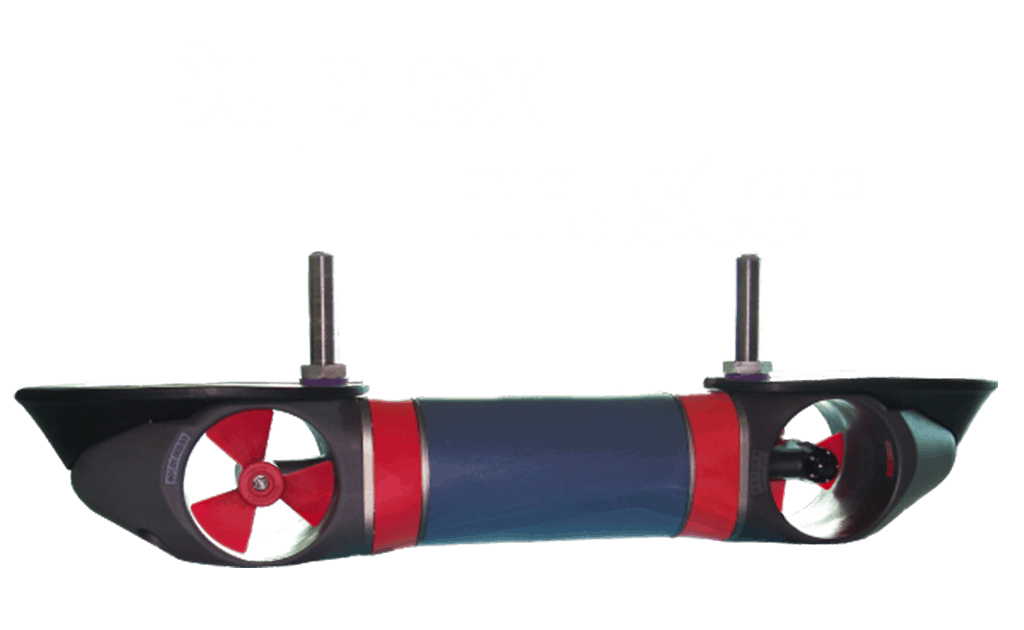
Product Benefits
Yacht Thruster is a German quality/Swiss precision designed, engineered and tested system manufactured to provide durability and performance with almost triple the operating time of a comparative electric boat thruster system. 25 minutes an hour, plus a 3-year warranty. Yacht Thruster requires no maintenance other than bottom paint and the motor is completely sealed.
Easy Installation
Requires drilling of only three small holes to assemble, which are sealed tightly with a special rubber sealant. No fiberglass work is necessary.
Space Saving
The complete drive unit is very compact and placed externally, saving valuable boat space. Only the operating and control elements, as well as the power supply remain inside the boat.
Minimal Noise
About 80 % noise reduction is obtained by the external placement of the engine. this also results the elimination of possible border cavitations.
Optimal Efficiency
Optimal efficiency results from a shorter transverse channel and ideal leverage which is created by deeper and more distant positioning away from the pivot point. Typically giving up to 40 % higher efficiency than with conventional systems.
Long Runtime
The external placement of the unit gives a more efficient water cooling and allows much longer duration per cycle of the unit than with traditional bow and stern thrusters.
Optimal Design
Hydrodynamic shape, very short flow-channel and ideal placement reduce the water resistance to a fraction compared to conventional systems. There is no perceptible loss of speed.
Simple and Quick Installation
Virtually no resistance in the water.
Tank testing proves that water resistance under power is less than .09% (nine hundredths) power loss, under sail is .05% (five hundredths) loss under sail compared to a tunnel thruster at 10% sail handicap, and equivalent to the drag of only a folding propeller.
Utilizes approximately ½ the amperage of an equivalent LBS thrust tunnel thruster and Minimizes battery consumption Yacht Thruster Nominal current.
Specifications - Duplex Thruster Models
Model 600d (duplex) - boats from 52 - 66 feet (bow install) / 52 to 60 feet (stern install).
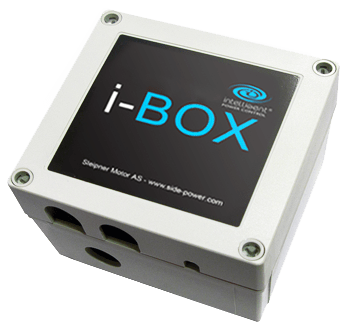
The system control center
- Provides delay between drive directions.
- Monitors solenoid functions to reduce the chance of solenoid lock-in.
- Will stop the thruster in case of a locked-in solenoid, without extra user action and even without controlling the main switch.
- Uses the same components as the other Side-Power series and can be combined with any other Side-Power thruster.
Sailboat Installation Positioning
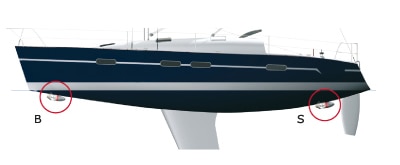
Optimal position for external Yacht Thruster installations:
- Bow Thruster (B)
- Stern Thruster (S)
On round chines there is no/limited necessary GRP work.
Motor Yacht Installation Positioning
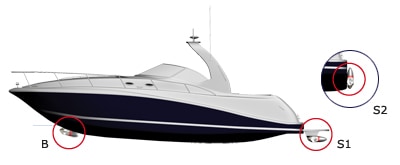
- Stern Thruster under swim platform (S1)
- Stern Thruster on “vertical transom” (S2)
On hard chines a fiberglass adaptor may be necessary for installation.
Adaptor Installation
Installation of an external Yacht Thruster is quick and easy. Simply drill a 50 mm diameter hole through the hull for the S/S through-hull fitting (attached to the thruster) which also feeds the required wiring. This through-hull fitting is supplied with a watertight seal which eliminates the need of additional fiberglass work. Also supplied as part of the installation kit are S/S rods to be bolted through two 18 mm pre-drilled holes. This also includes watertight seals and provides ultimate security and rigidity of your external yacht thruster installation.

The front mounting bolts are also secured from the vessels interior and provide a watertight seal.
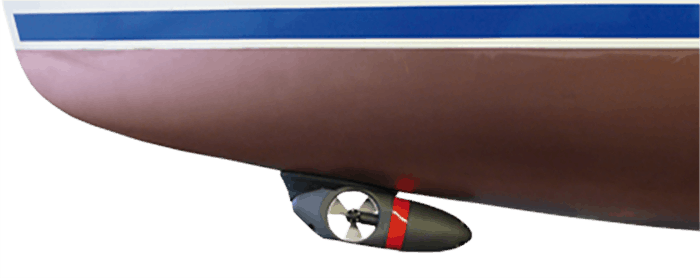
Special Watertight Sealing
The unique seals provide a permanent watertight solution.
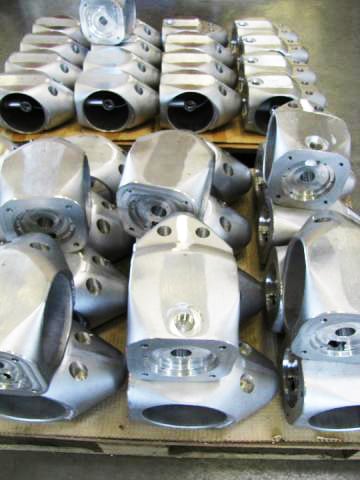
Hi-Tensile Aluminum
Our thrusters are milled from solid blocks of hi-tensile aluminum for incredible strength and durability.
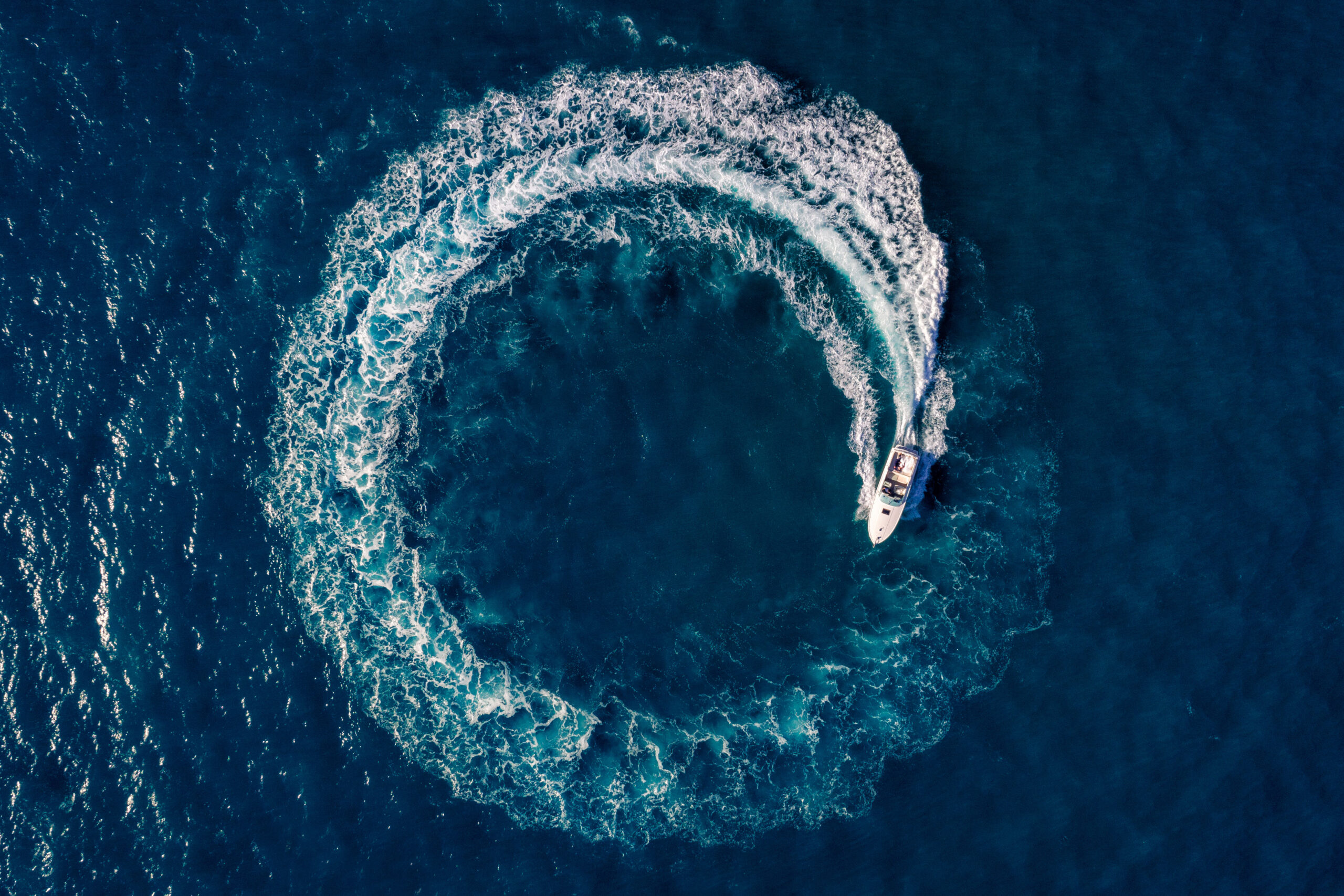
The BOW PRO Thruster Family
Control at your fingertips.
When you are enjoying a day on the water, your focus should be on enjoying every second of the boating season. Relish the time spent with family and friends … or perhaps in pursuit of your next big catch! It should not be spent worrying about docking your boat at the end of the day.
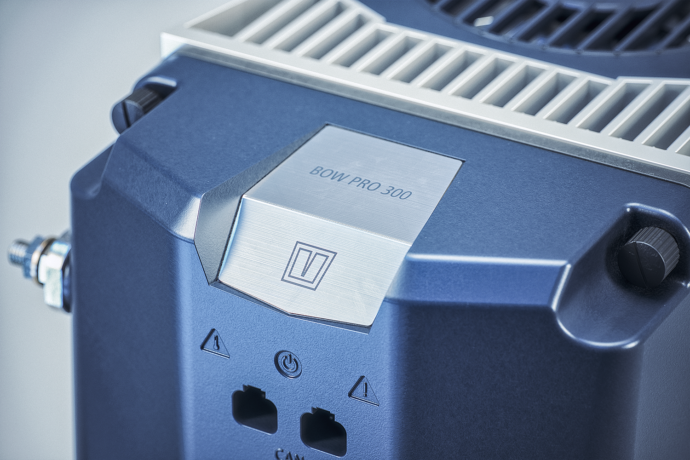
Manoeuvre your boat the way you want
With a BOW PRO on board, you can take away the worry and be confident in your docking skills. With a thruster at your disposal, you can manoeuvre your boat the way you want. A VETUS thruster gives you sideways control of your boat so you can precisely position the bow and the stern of your boat. Even in less-than-ideal conditions, you are always in full control of your boat.
Not all thrusters are equal. Traditional thrusters offer two modes: on and off. Our BOW PRO thrusters offer full proportional control. This means you get to decide how much thrust you need – a little or a lot. And, with VETUS’s innovative DC-to-DC charging technology, you can be confident that your thruster will always be ready to use as much as you need, without fear of overuse or overheating issues.
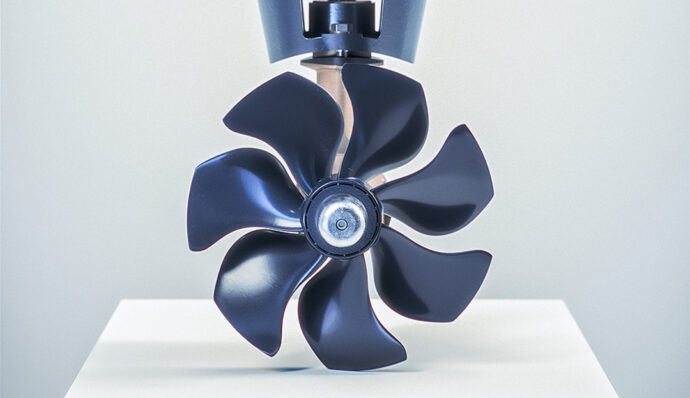
The one-of-a-kind thruster
You can even take your control a step further with the available lock-and-hold feature. Hold your boat in place while you handle the lines, allowing the rest of the family to relax.
Thrusters are not just for docking. Having total control of your boat is important in any tight situation or when handling your boat with a marlin on the line.
Perhaps the best part of a BOW PRO thruster is the maintenance-free, brushless induction motor. Less maintenance means less hassle and more carefree time out on the water.
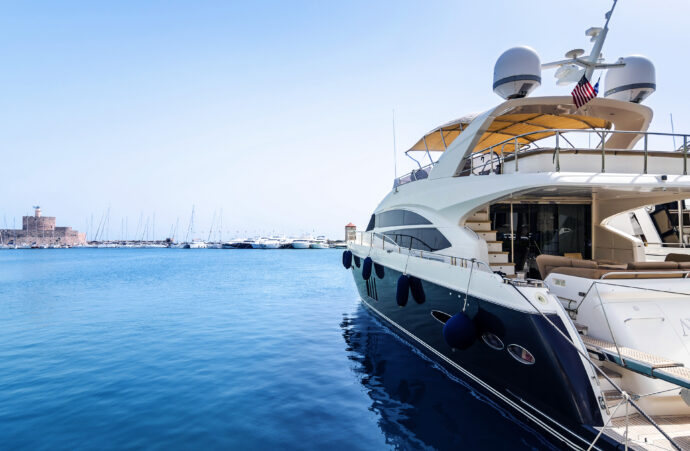
Thrusters can take the stress out of docking by giving you sideways control of the movement and position of the bow and the stern of your boat. They work by rotating a propeller in a submerged tunnel or a housing mounted athwartships and located near the bow and/or the stern.
The VETUS BOW PRO is a one-of-a-kind thruster, which is standard fully proportional controlled. This thruster is equipped with brushless induction motors. Therefore the bow / stern thruster motor is maintenance-free and has much longer runtimes compared to conventional DC thrusters
The induction motor is controlled by the VETUS MCV motor controller. The built-in over-temp and low battery protection, combined with the brushless induction motor make the BOW PRO thruster series highly resistant to abuse and ideal for the most demanding boater in the most difficult manoeuvring situations
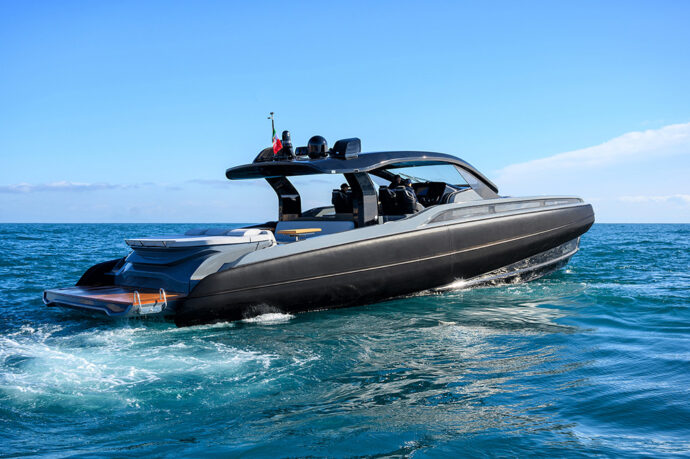
Revolutionary concept matched with proven technology
The BOW PRO is available in several propeller and tunnel diameters and powerful enough to turn your runabout in the desired direction. Recommended battery sizes for the BOW PRO series are slightly larger than advised for conventional DC thrusters. With these larger batteries you can take full advantage of the motor efficiencies, which results in longer run-times
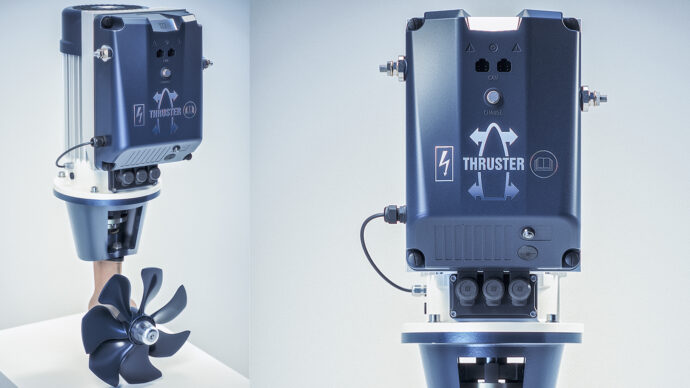
Unique Features
- Unlimited runtimes
- Fully proportional control
- Connectivity to devices with canbus carrying signals possible
- Digitally controlled by (patented) MCV motor controller
- Available with lock-and-hold controls
- Maintenance-free brushless induction motor
- Highly efficient thruster system
- Built-in over-temp and low battery protection
- Interchangeable with existing thrusters (shared tunnel sizes)
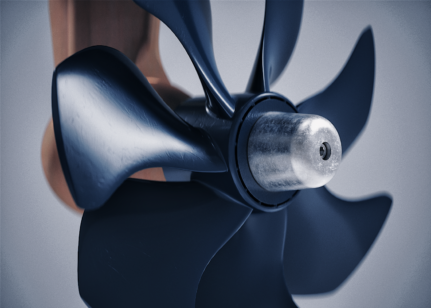
Subscribe to our newsletter
Receive the latest information about offers, promotions and news.

- My Searches
- Watch List (0)
- Sign In
Used Boats For Sale
Power boats over 50ft, palm beach motor yachts boats for sale, palm beach motor yachts 50 sedan boats for sale, palm beach motor yachts 50 sedan sold.
ABOUT THE SELLER

Buy this Boat with Confidence

CONTACT THE SELLER


COMMENTS
Yacht Thruster E-Thrust Overview. E-Thrust by Yacht Thruster is the world's number one selling, externally mounted thruster for bow and stern applications, on both power and sailboats. Precision production produces a rugged housing manufactured out of solid machined aluminum with a hand built sealed motor using rare earth elements for power ...
Rim-Driven Thruster: This is the newest type of bow thruster and is still relatively rare. A rim-driven thruster uses an electric motor to rotate the propeller, which is integrated into a circular housing that surrounds the propeller. The housing acts as the rotor of an electric motor, creating a more efficient and quieter propulsion system.
Bow or stern installation. for boats 50ft - 70ft. Learn More. Yacht Thruster Continues to be the Leader in Externally Mounted Thrusters! As the pioneer in external thrusters, our products are equipped on over 285 brands of power and sailboats, with thousands of systems in operation today. The Yacht Thruster can be easily coupled with a ...
In layman's terms, a bow thruster is a propulsion device installed in the bow, or front, of a boat to aid in maneuvering. The device uses a motor to power a propeller, pushing water perpendicularly to the boat's heading and providing a lateral, or sideways, motion. Think of it as power steering but for your boat, allowing you to move sideways ...
TEXT : Derek 305.244.5233 Yolanda 305.922.5964. [email protected]. Yacht Thruster is the world's number one selling, externally mounted thruster for bow and stern applications, on both power and sailboats.
Bow thrusters are a type of propeller-shaped system fitted on the bow (forward part) and stern (known as stern thruster) of the ship. They are smaller in size than the ship's propeller and help the vessel be more manoeuvrable at lower speeds. Bow thrusters are generally used to manoeuvre the ship near coastal waters and channels or when ...
Stern Thruster (S) On round chines there is no/limited necessary GRP work. Motor Yacht Installation Positioning. Optimal position for external Yacht Thruster installations: Bow Thruster (B) Stern Thruster under swim platform (S1) Stern Thruster on "vertical transom" (S2) On hard chines a fiberglass adaptor may be necessary for installation ...
At Sideshift we do one thing and we do it well: We take the stress out of docking your boat! Our revolutionary bow and stern thruster technology sets the standard for affordable, powerful, and easy-to-install thruster solutions for all types of boats, including monohull, pontoon, and houseboats. Since introducing the industry's first external ...
Yacht Thruster Models - Specifications. Model 300S (Simplex) - Boats up to 55 feet* (Bow Install) / 37 to 47 feet (Stern Install) Model 300S Specs; Power (KW) 3.0: Thrust Equivalent (lbf) 207 bow / 148 stern: ... Recommended Boat Size (Bow) Up to 44ft* Recommended Boat Size (Stern) 33ft - 42ft
Prepare the installation area: Once you have chosen the right bow thruster, you need to prepare the installation area. This involves creating a hole in the bow of your boat where the thruster unit will be installed. The size and location of the hole will depend on the size of your boat and the type of thruster you are installing.
Perhaps the best part of a BOW PRO thruster is the maintenance-free, brushless induction motor. Less maintenance means less hassle and more carefree time out on the water. Thrusters can take the stress out of docking by giving you sideways control of the movement and position of the bow and the stern of your boat.
Our step-by-step guide demonstrates how to get the best out of your bow thruster Become a FREE SUBSCRIBER to YBWTV's YouTube page now - https://www.youtube...
All Lewmar Thrusters have been extensively tested, resulting in a smooth, efficient and quiet performance that will have you docking like a pro in no time. ... Boat length. 31-50ft (17) 51-70ft (21) 71-100ft (18) 101+ ft (15) up to 30ft (16) View Details. TT / RT Thruster Controllers. View Details ...
Consider these factors when choosing a bow thruster: Strength of winds and currents - The more the wind and water move in your environment, the more power you'll need from your thruster. The boat's profile - The higher and longer your boat's superstructure, the more pressure a thruster will need to push against a cross wind. Bow shape ...
Installing a Vetus Bow Pro 42 KGF aboard a Jeanneau was a straightforward, single-day job for the seasoned team at New England Bow Thruster. Second, Bow Pro thrusters use a brushless induction motor, a feature that shortens the list of maintenance chores. Most thrusters use motors with brushes, small blocks of carbon that conduct current from ...
All bow thrusters are simple to use - just push the switch or lever in the direction you want the bow to go and it will follow - but there are a couple of things to watch. They really only work effectively when the boat has stopped or is moving at less than a knot - more than that and the water is moving past the thruster's tunnel too ...
What They Are — Pros & Cons. A bow thruster is simply a propulsion device located at the bow that provides lateral (port and starboard) thrust, making the vessel more maneuverable. Bow thrusters often come as standard equipment on newer pleasure boats over 45 feet, but almost any midsize vessel can be retrofitted.
The motor was bolted in place with the gearleg inside the tunnel. It's important to align the motor so the props are centered in the tunnel and don't hit the tunnel walls. ... As a result, the only practical solution was to install a Yacht Thruster external bow thruster. Max did a lot of the work himself, installing a battery beneath the ...
Like any piece of equipment on your yacht, bow & stern thrusters require maintenance to perform at the highest level. Check out these 5 maintenance tips. Yachts for Sale. All Yachts; New Yachts ... To check it, you will simply connect a volt-meter to the positive and negative terminals on the thruster motor and read the voltage while the ...
Bow Thruster Advantages. Sep 15, 2021. Single-screw boats can be difficult to dock without aid in wind or when fighting current. Even experienced captains will relent for safety's sake and ask for a helpful hand—someone on the dock who gets tossed a bow line and pulls the boat in. With a bow thruster, however, that helpful hand is a small ...
ProSport 12, 12 VDC - 12A battery charger serving bow thruster battery bank. Parallel through battery switches. Three (3) Battery Banks. Bank 1 (2) 8D - 12 VDC wet cell Engine / Genset start. Wired in Parallel for 12 VDC. Bank 2 (14) 6 VDC wet cell sealed House service. Wired in Parallel/Series for 12 VDC. Bank 3 (2) 8D - 12 VDC wet cell Bow ...
Click here to discover PURA VIDA yacht for sale. This 68' (20.8m) Motor Yacht boat by AZIMUT YACHTS is for sale with Northrop & Johnson. ... Canopy Sun shades at flybridge and bow area. Central vacuum system ... Painted hull. Hydraulic Passarelle. Bow & stern thruster. Teak on all deck areas. Hydraulic Swim Platform. Tender AB 470 with Yamaha ...
Home > Yachts for Sale > Motor Yacht > Don't Tell Mom. Don't Tell Mom Yacht for Sale - 96' Sanlorenzo. Type: Motorboat. Category: Motor Yacht. Builder: Sanlorenzo. Model: SD96 . ... (Engine throttles and bow thruster tiller) Portable control station MTU with one connection point (at aft cockpit) Satellite and Communication Systems (TV SAT)
Stern Thruster (S) On round chines there is no/limited necessary GRP work. Motor Yacht Installation Positioning. Optimal position for external Yacht Thruster installations: Bow Thruster (B) Stern Thruster under swim platform (S1) Stern Thruster on "vertical transom" (S2) On hard chines a fiberglass adaptor may be necessary for installation ...
From the multi-position bow seating, to the immense space in the aft thanks to the two outboard engines, you will have plenty of room for you and your guests for a weekend away on the water. Venture down into the cabin, which boasts a California Queen and a spacious settee, the 36 XO will give you everything you need and more.
Perhaps the best part of a BOW PRO thruster is the maintenance-free, brushless induction motor. Less maintenance means less hassle and more carefree time out on the water. Thrusters can take the stress out of docking by giving you sideways control of the movement and position of the bow and the stern of your boat.
Powered by twin Volvo IPS D6 diesel engines at 440 HP each, there is never a question about responsiveness and reliability onboard a Palm Beach Motor Yacht. Manoeuvrability is a breeze with DPS controller and powerful Side Power bow thruster.
Vetus Bow Thruster (2014) Dometic Turbo Air Conditioning/Heat Units. NorPro 10.7 kw Generator (2014) ... , CPYB 903-401-9049 [email protected] Your Source For New Jeanneau Sailing Yachts New Catalina Sailing Yachts New Beneteau Power True North Motor Yachts And Quality Brokerage Boats Certified Professional Yacht Broker (CPYB) Florida ...